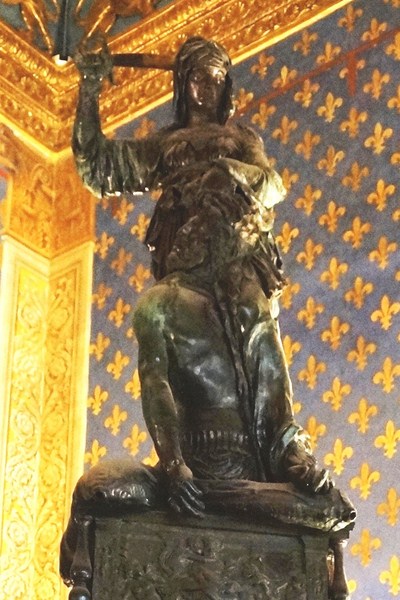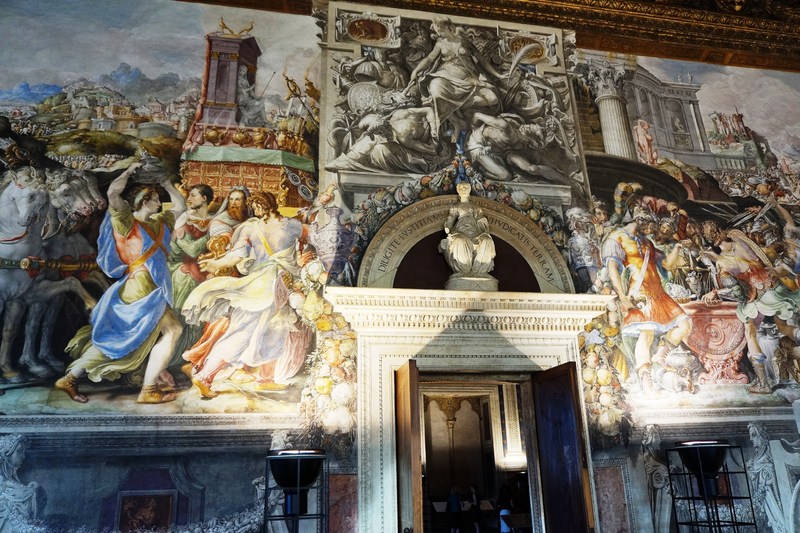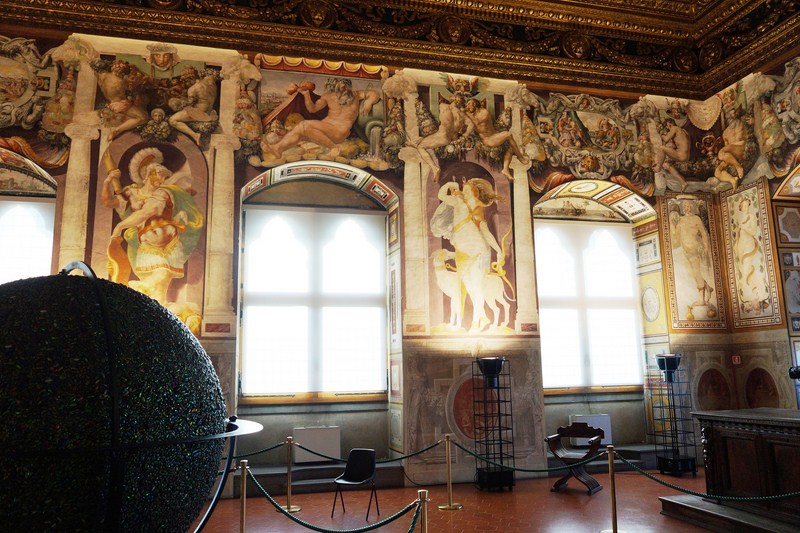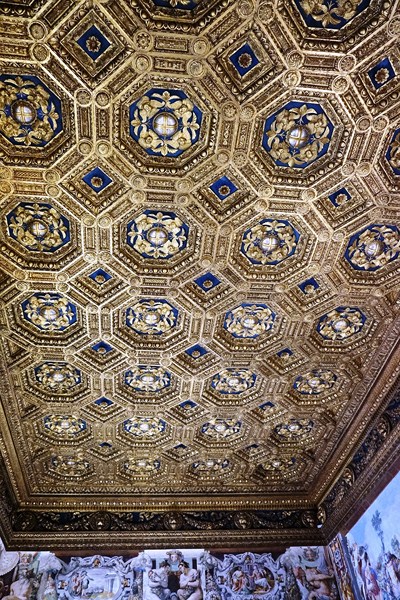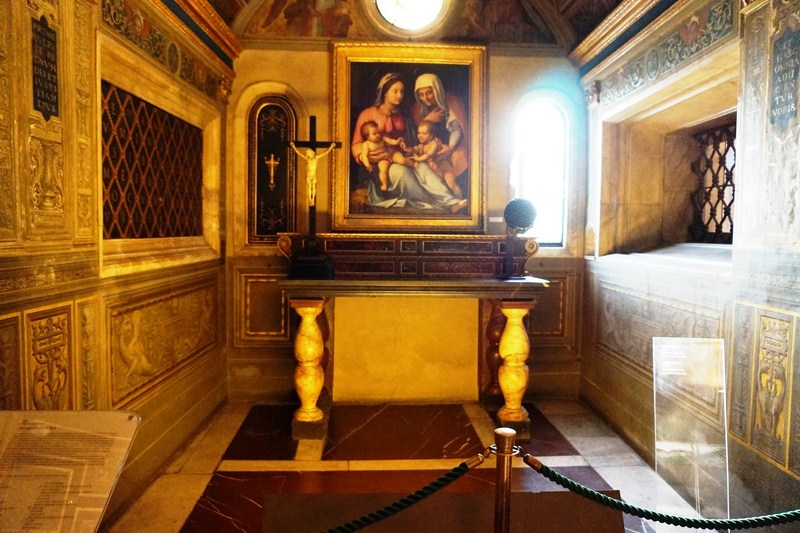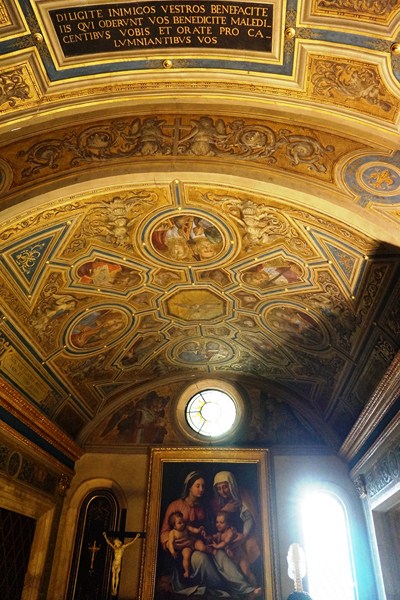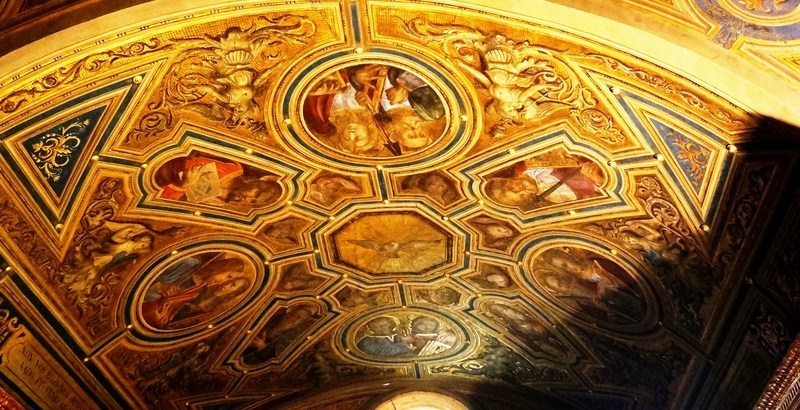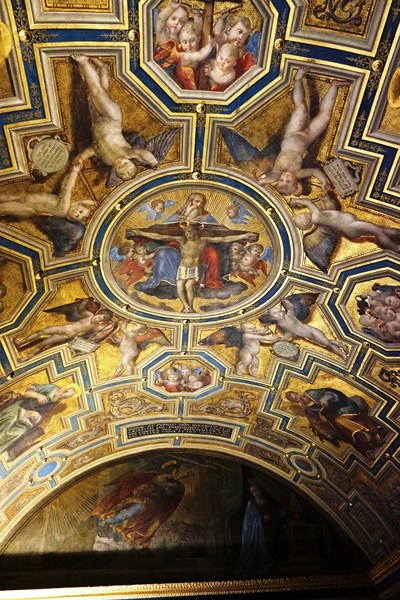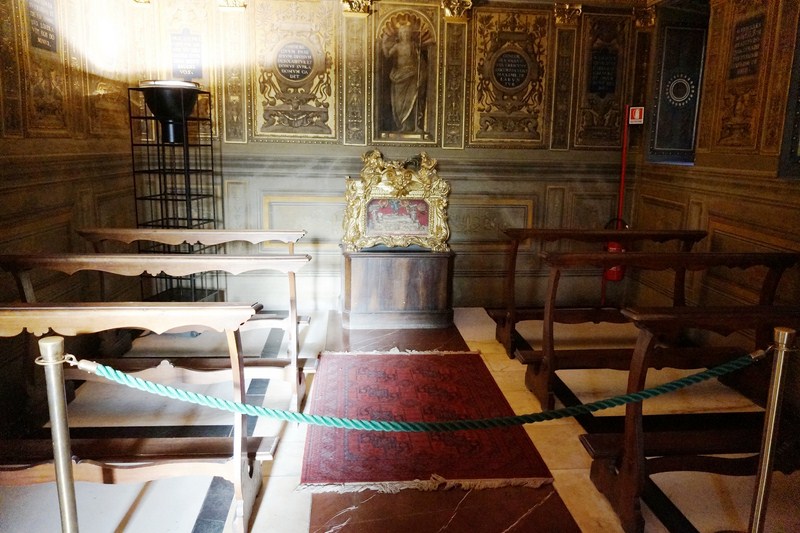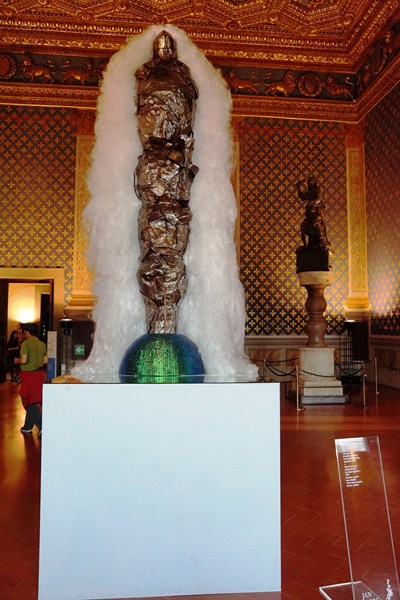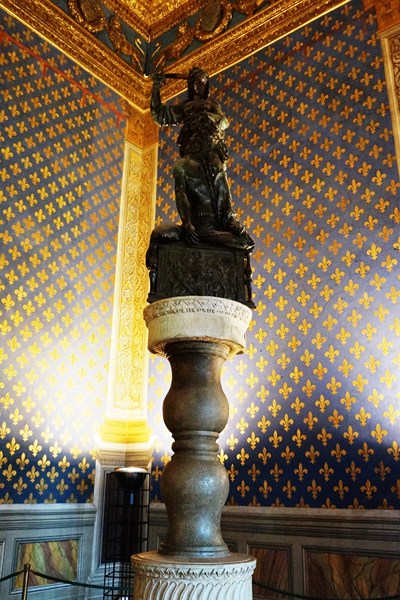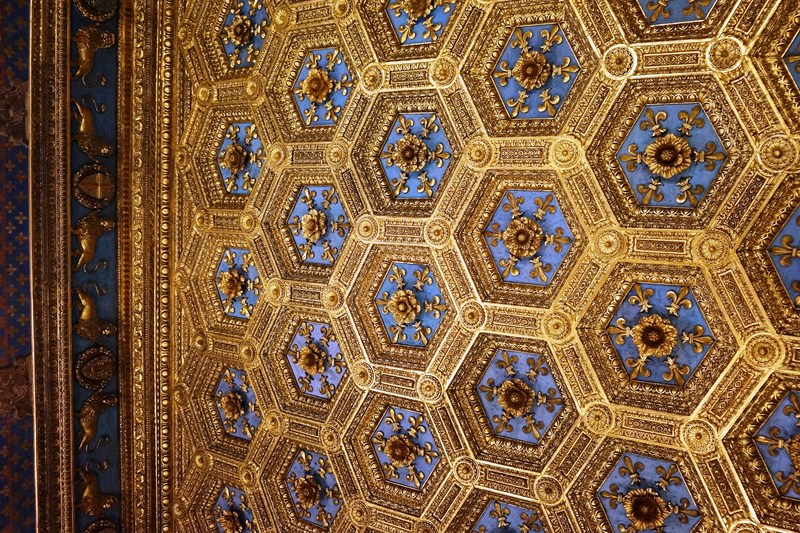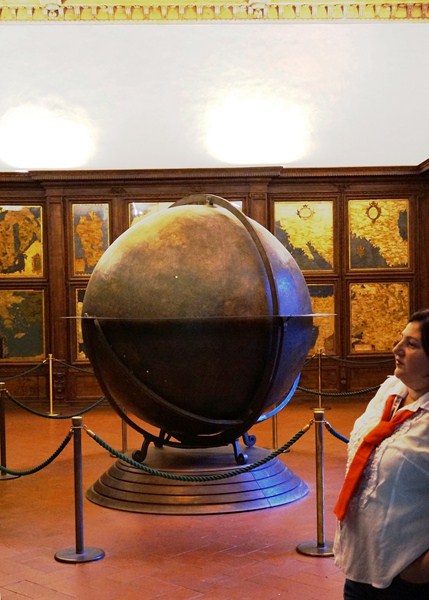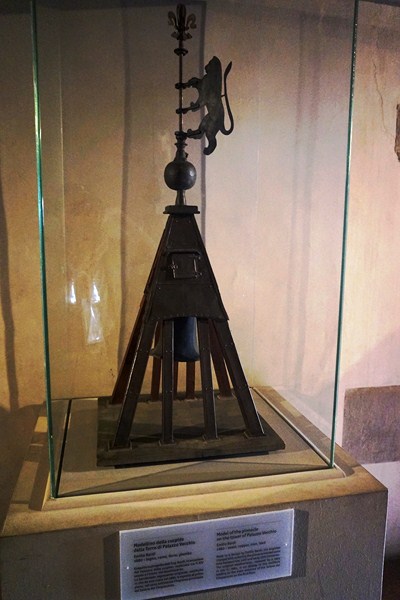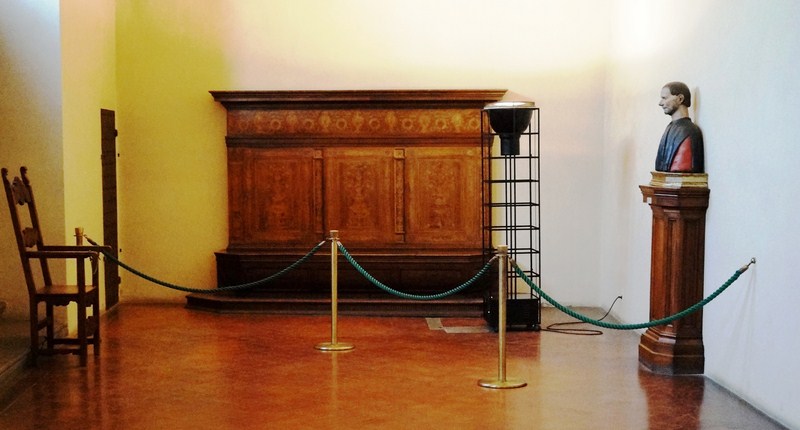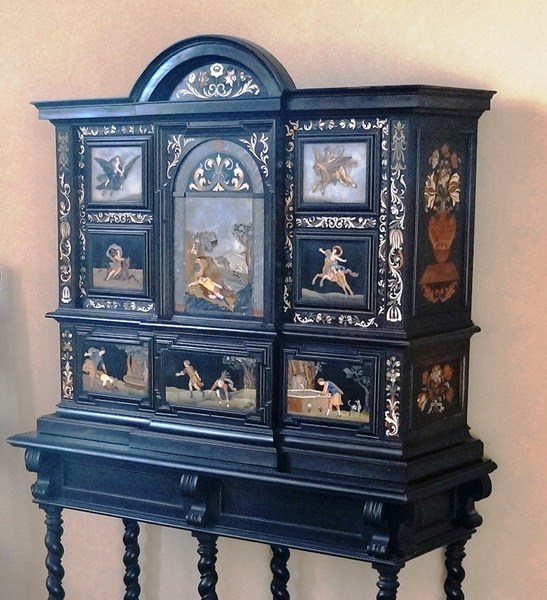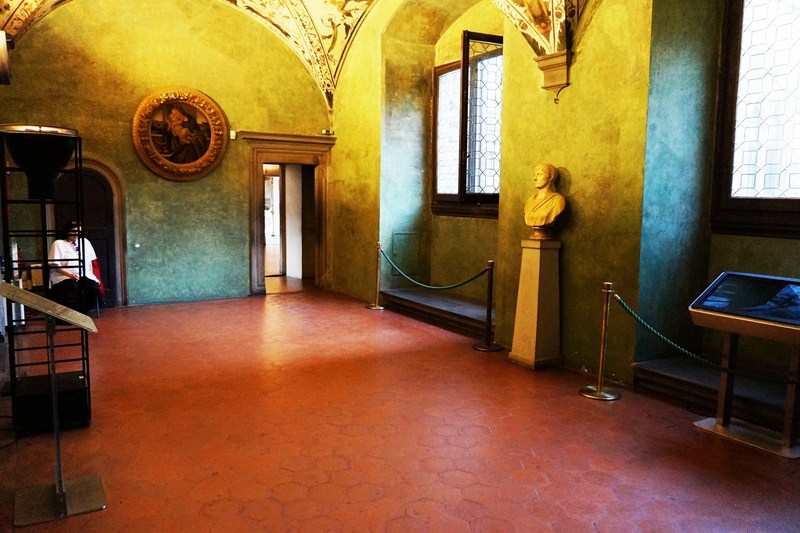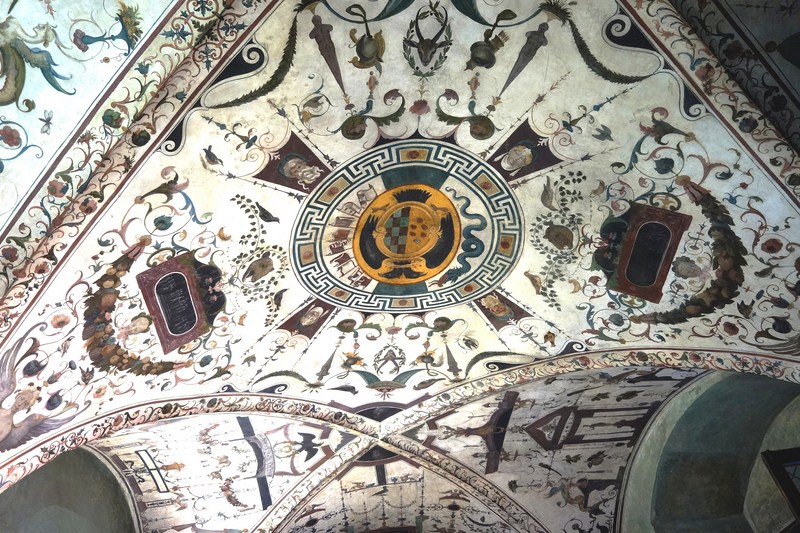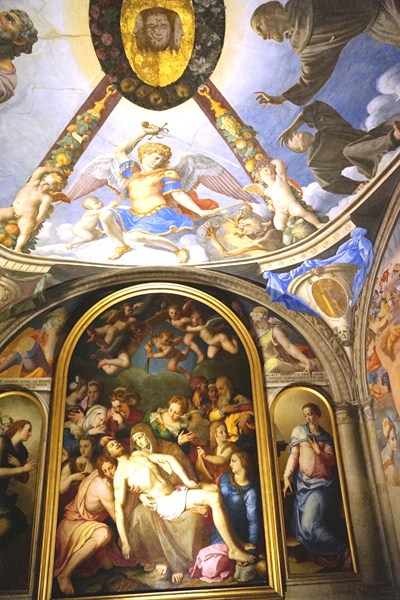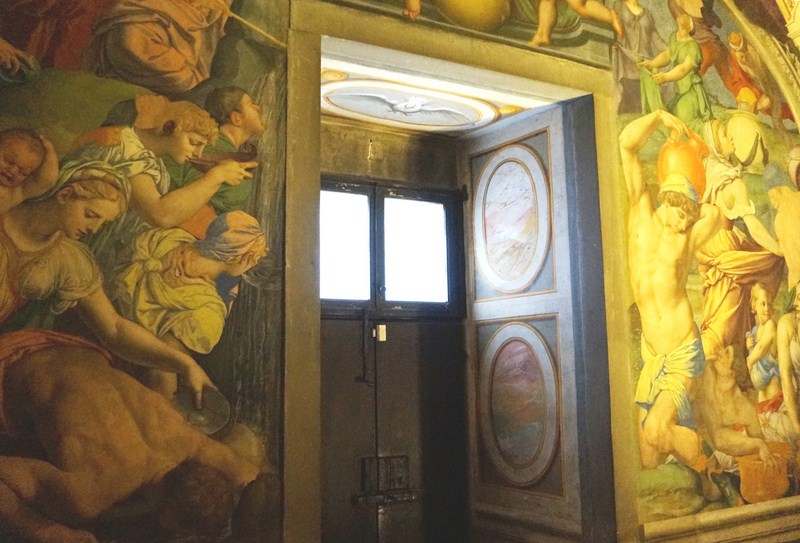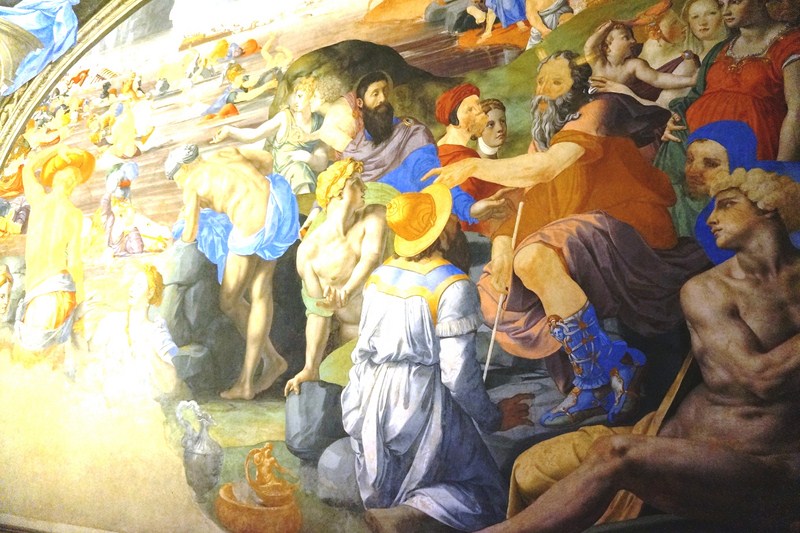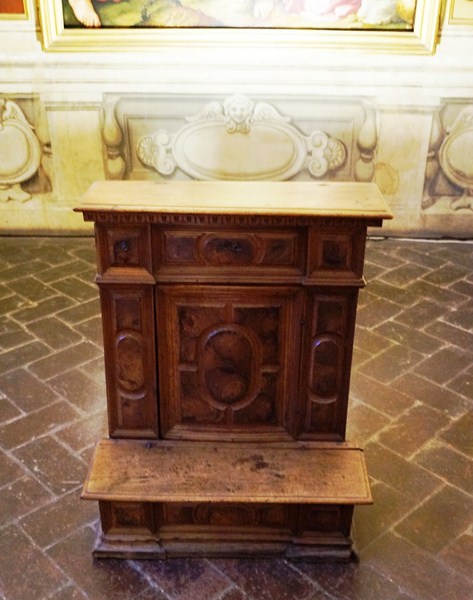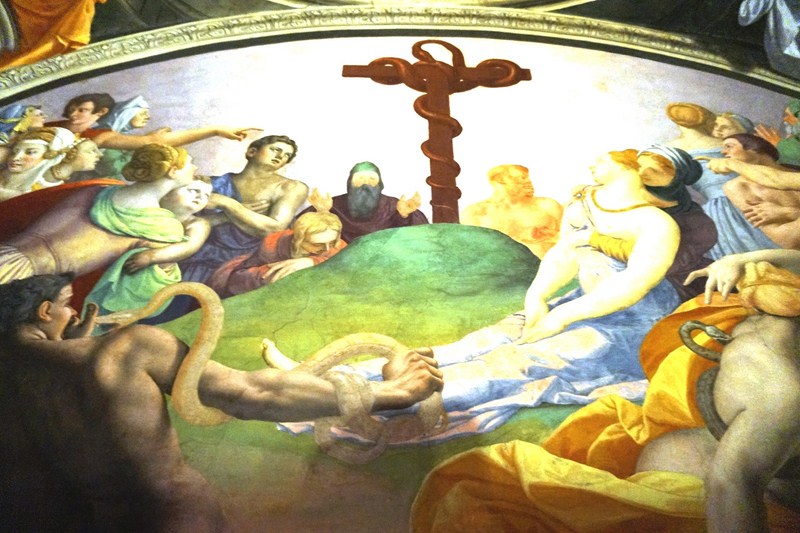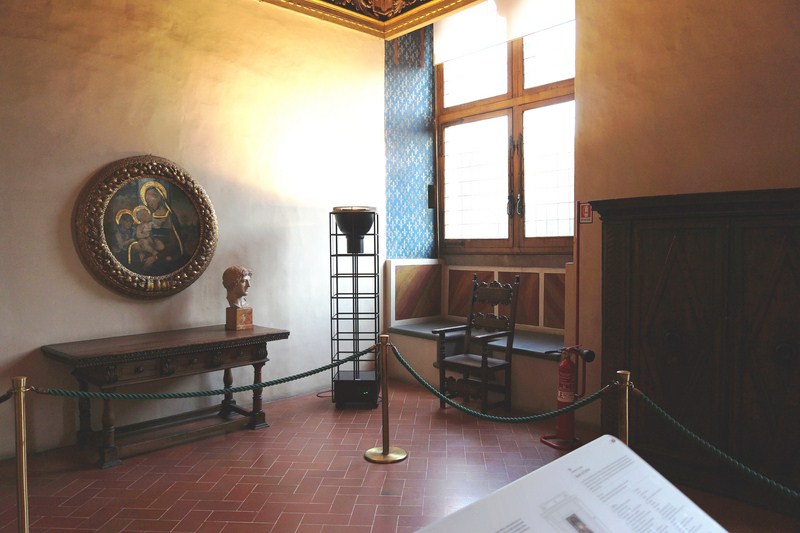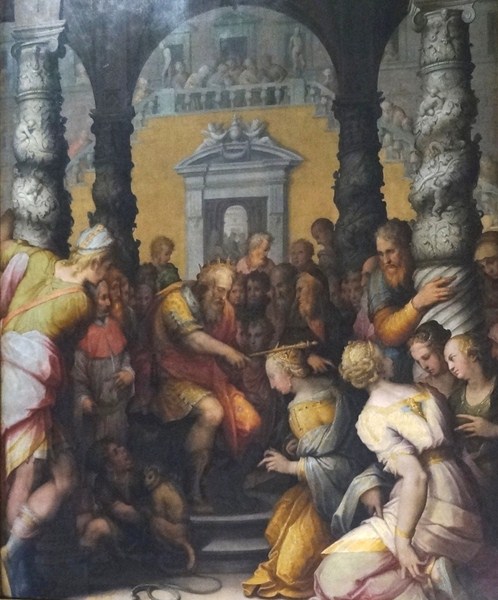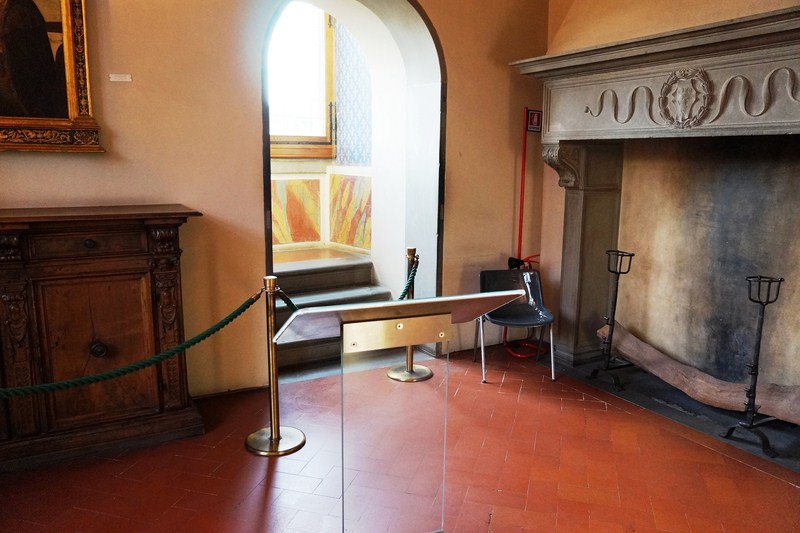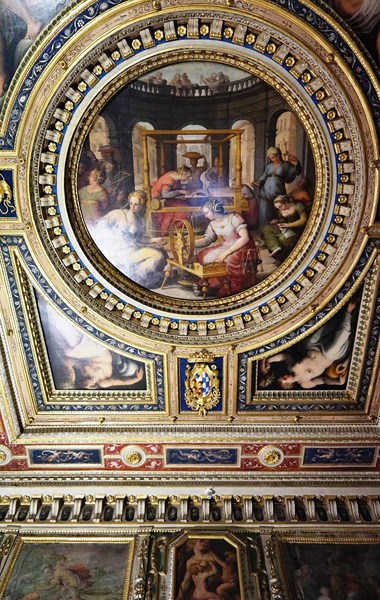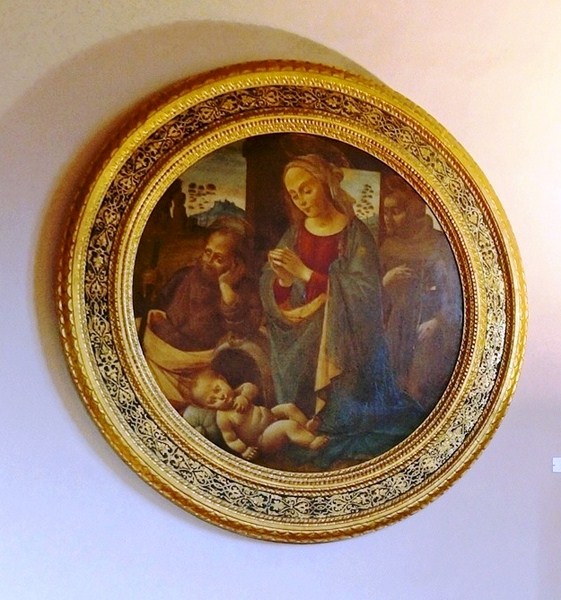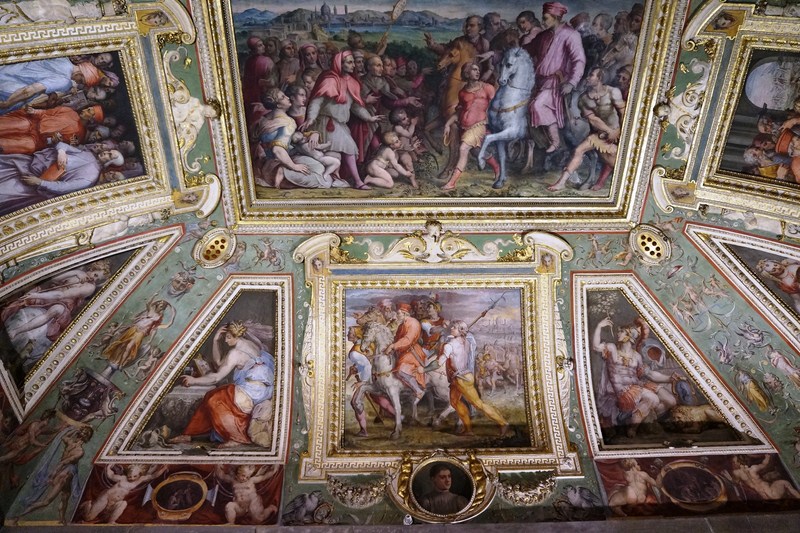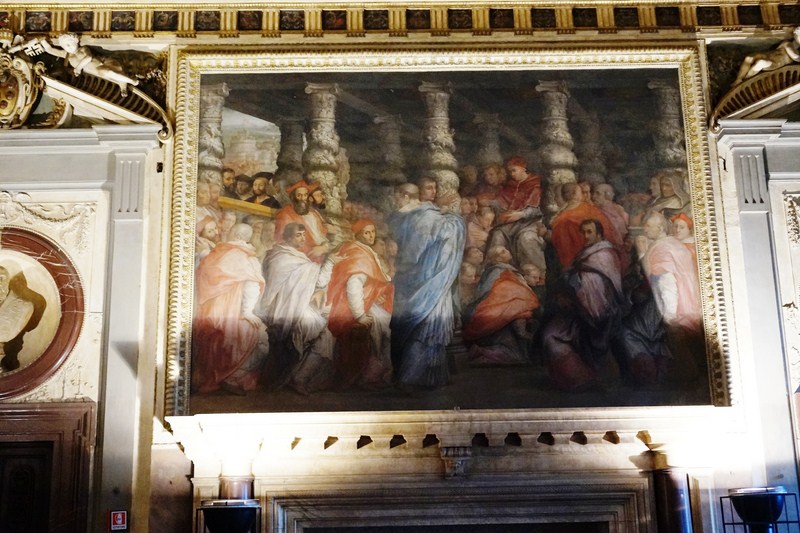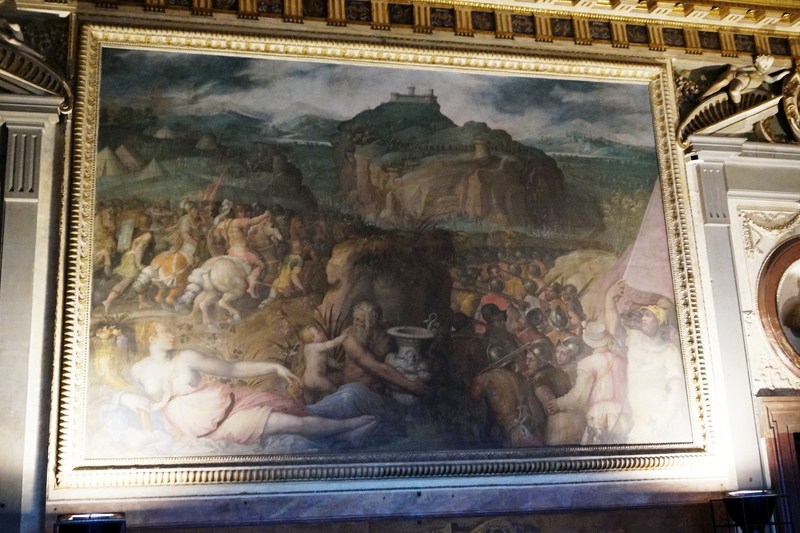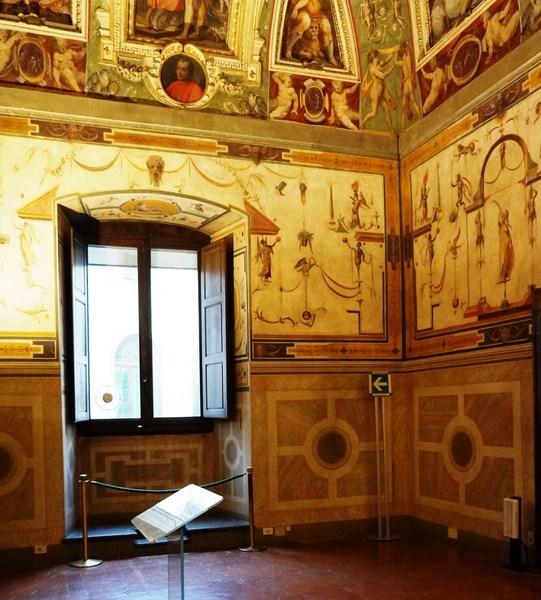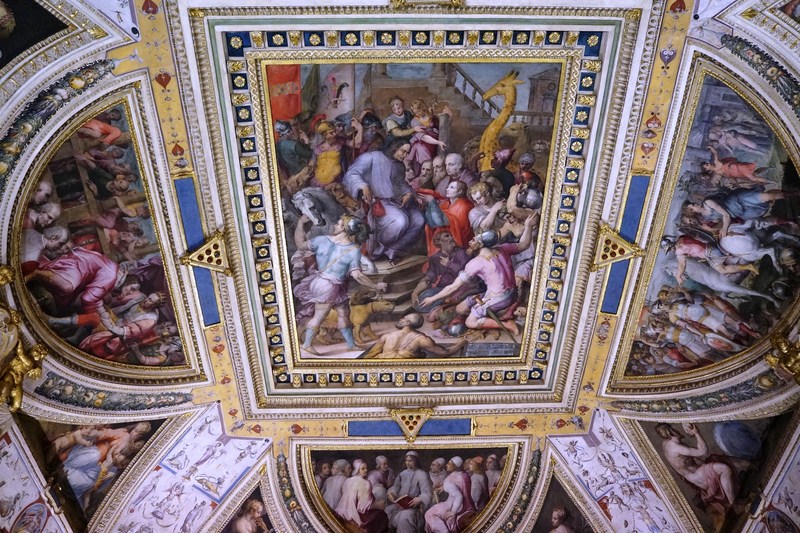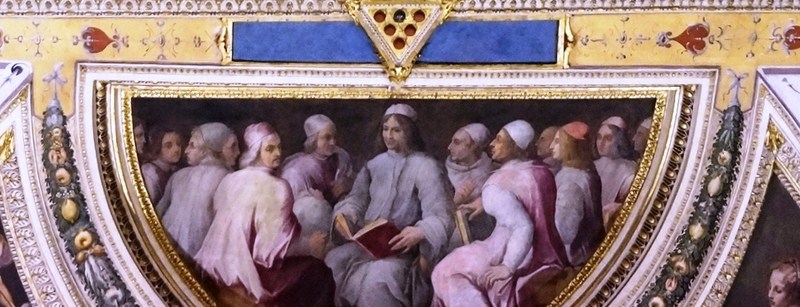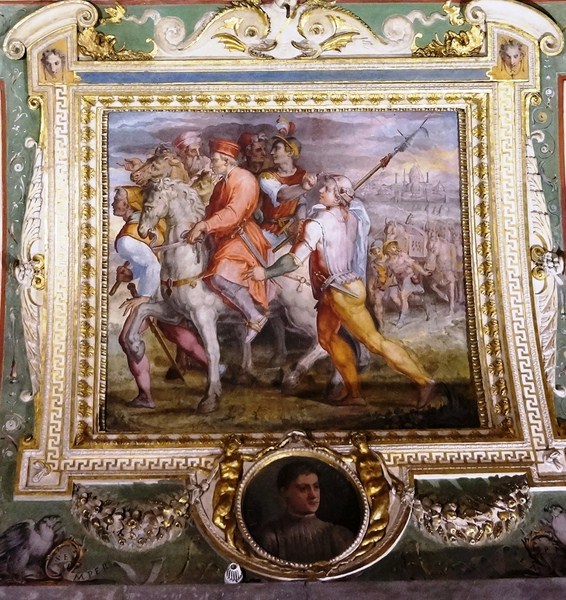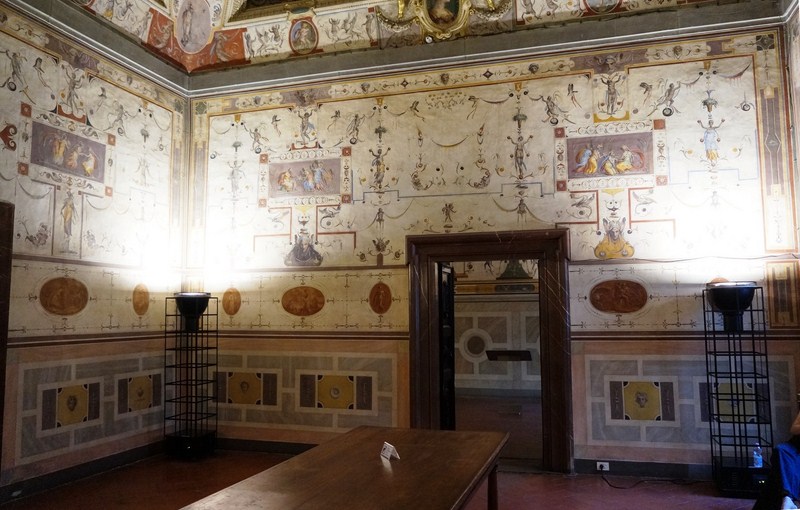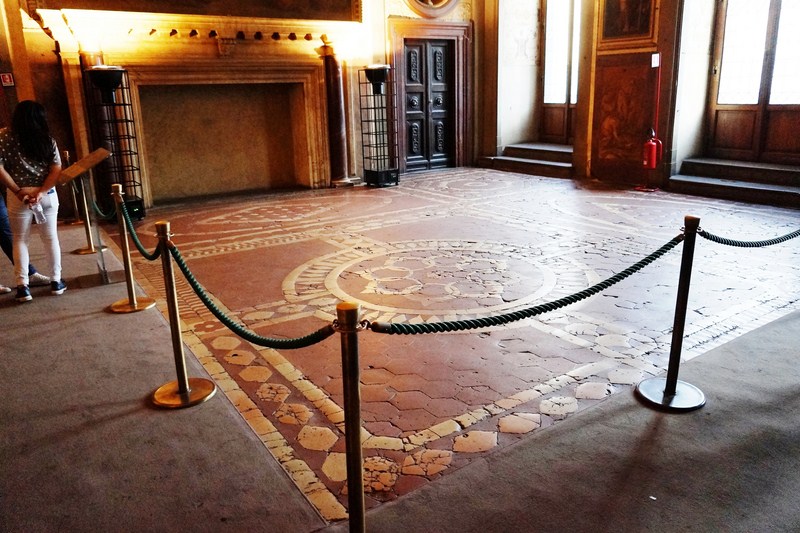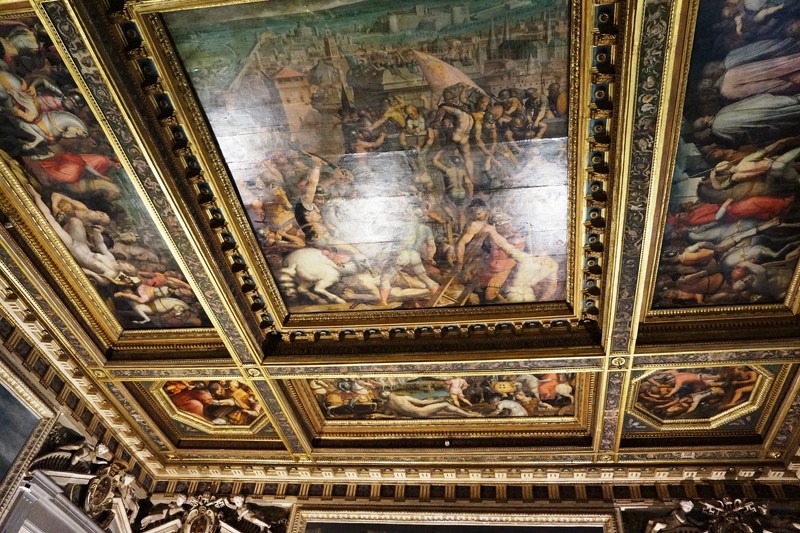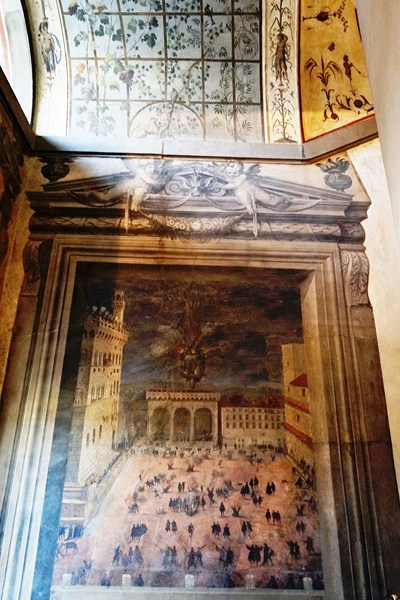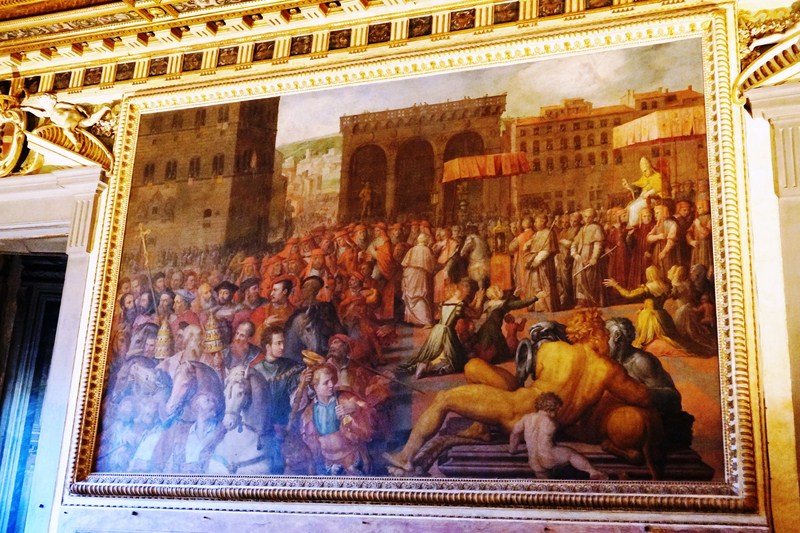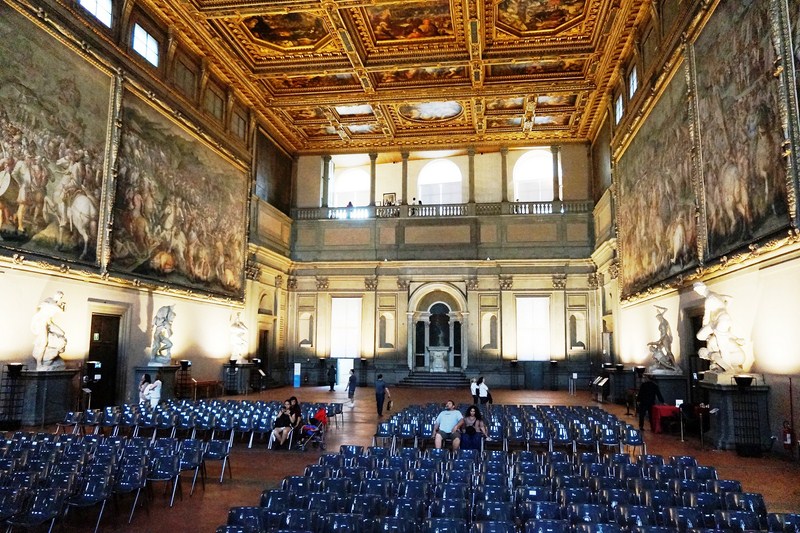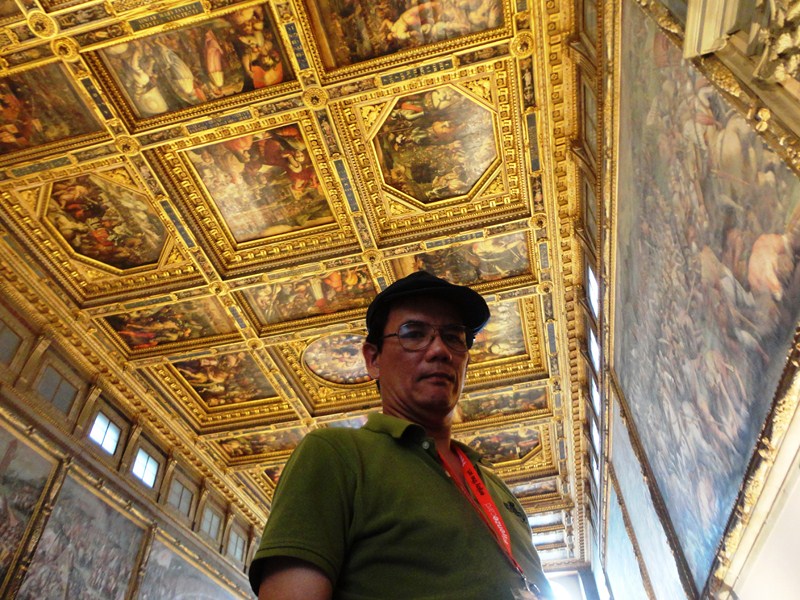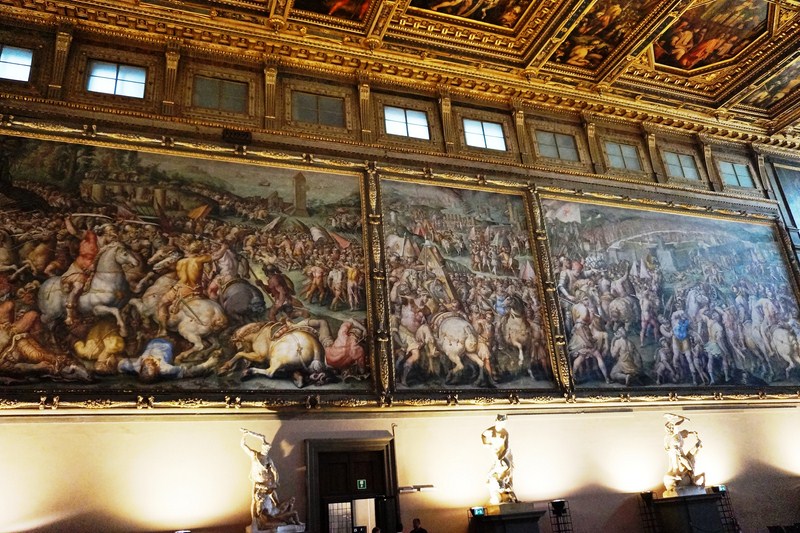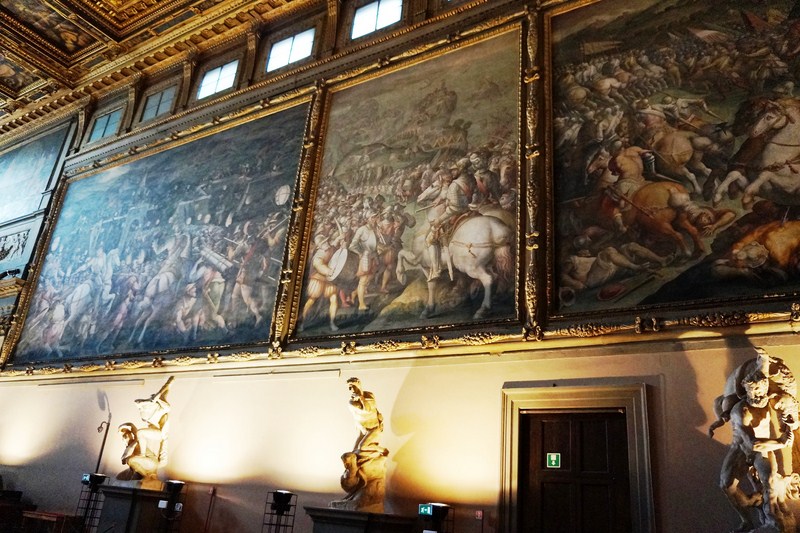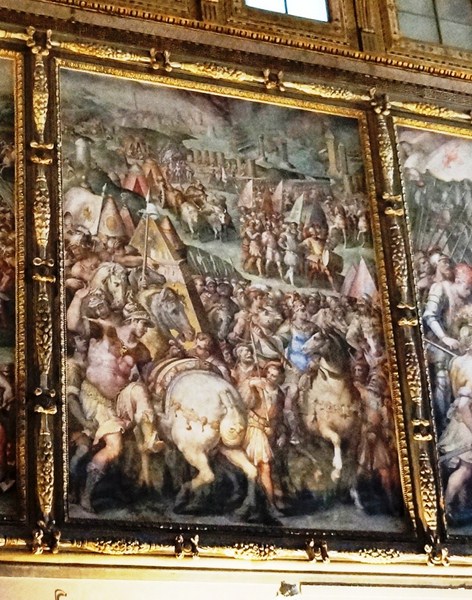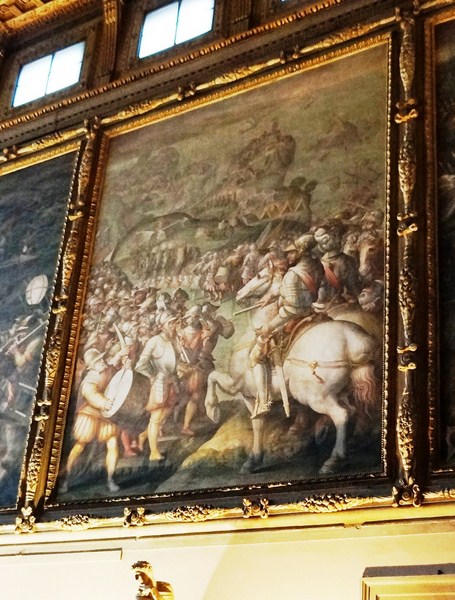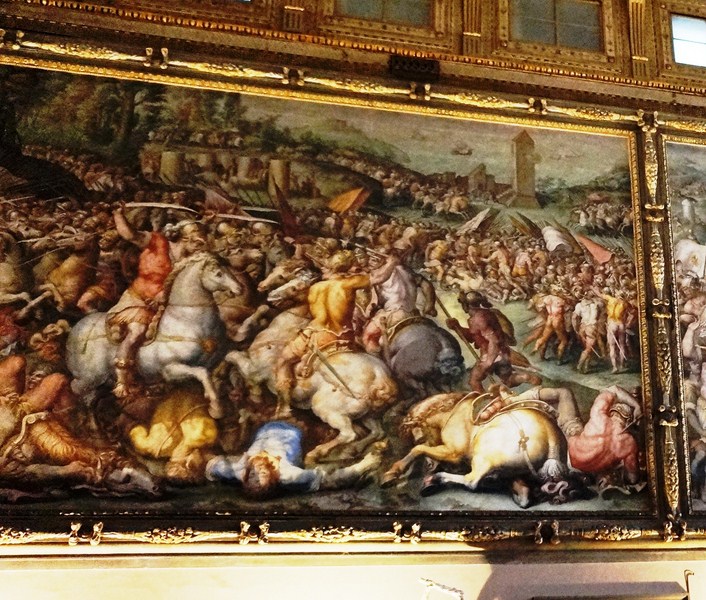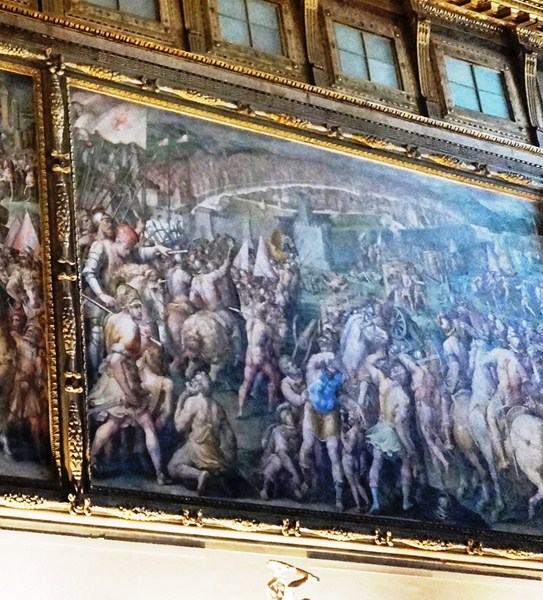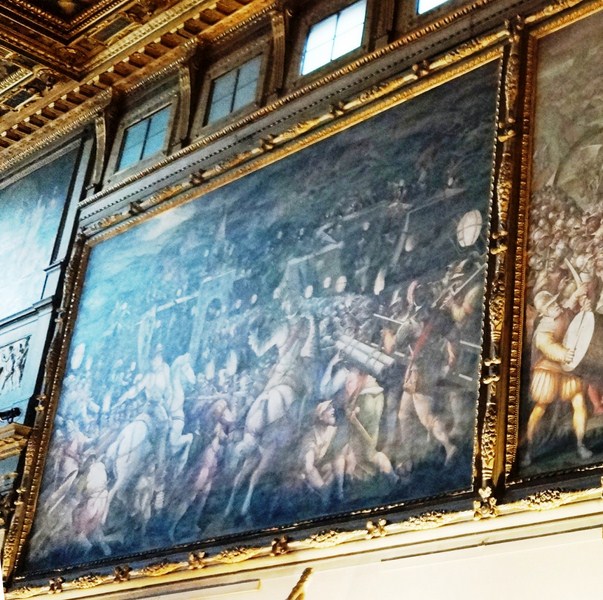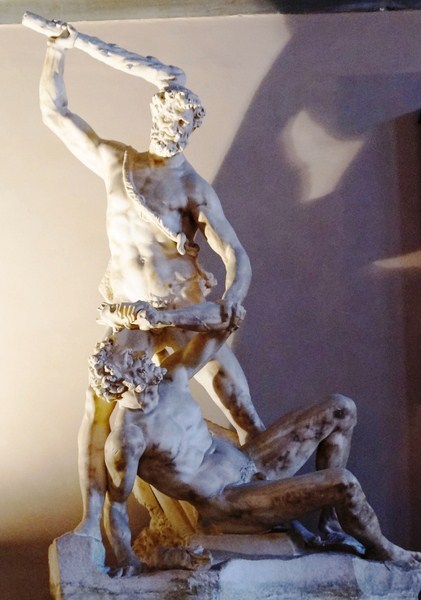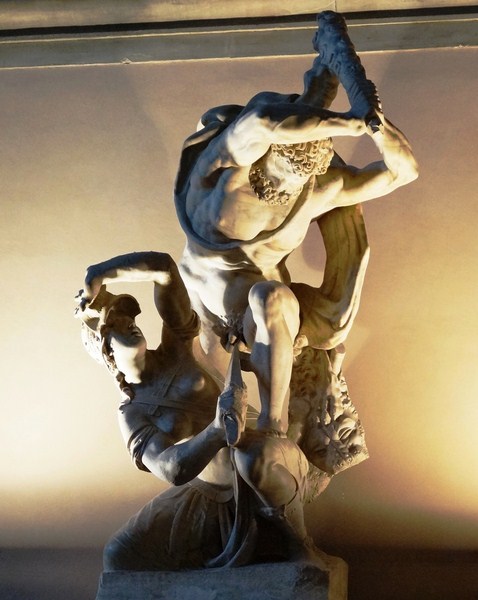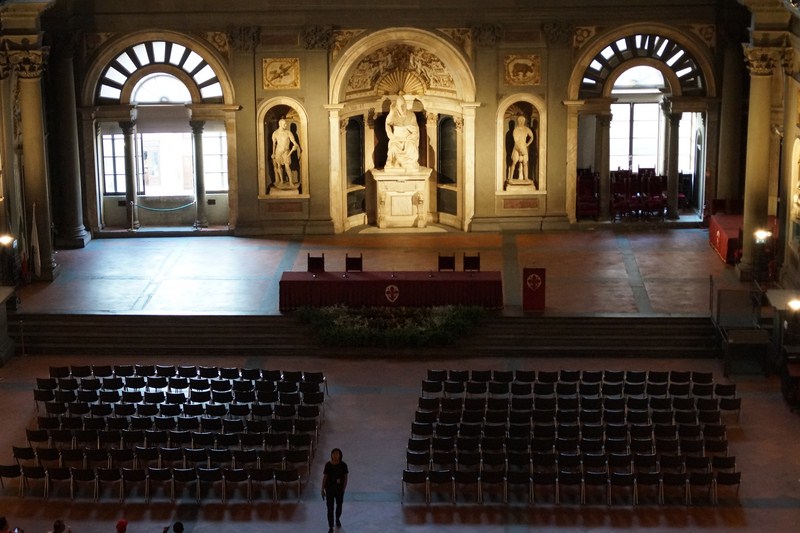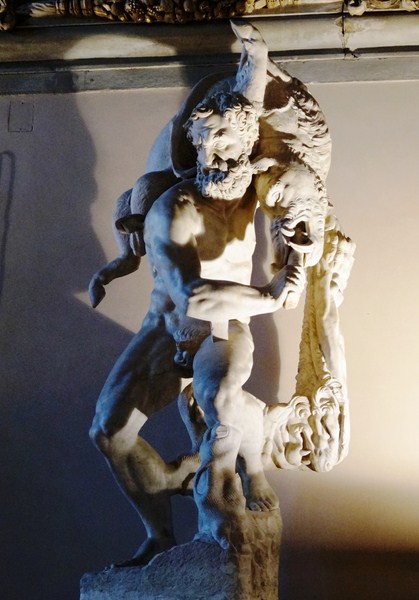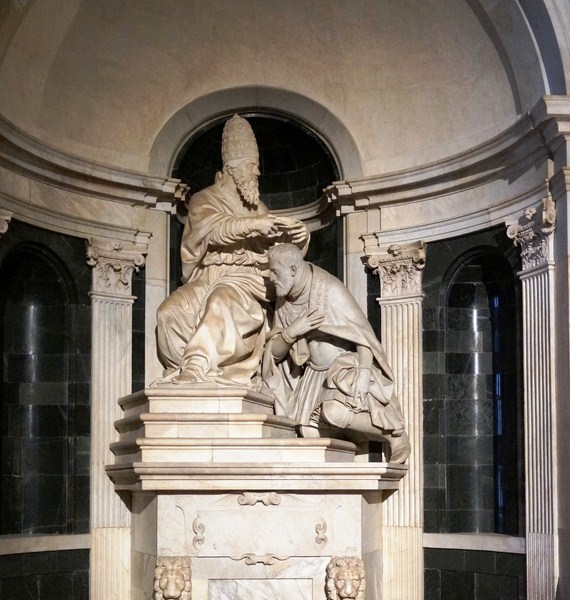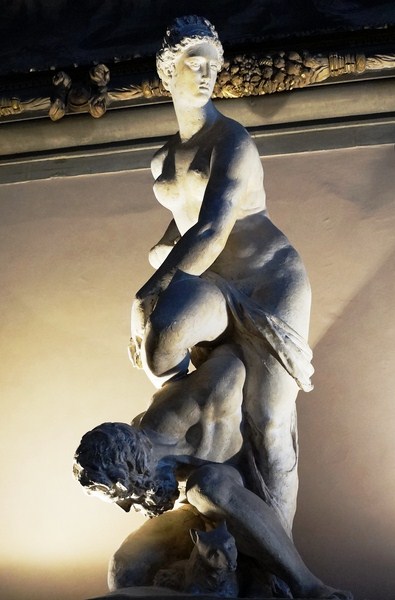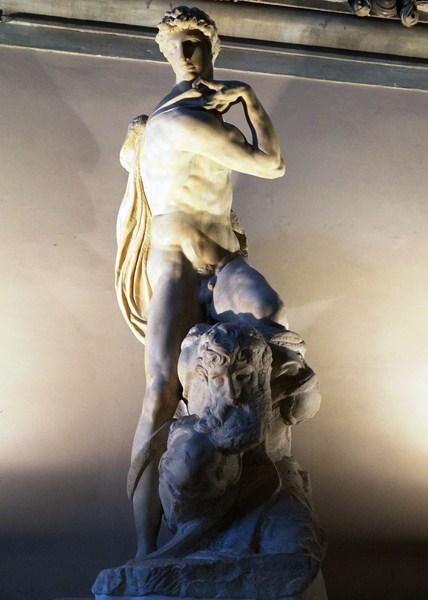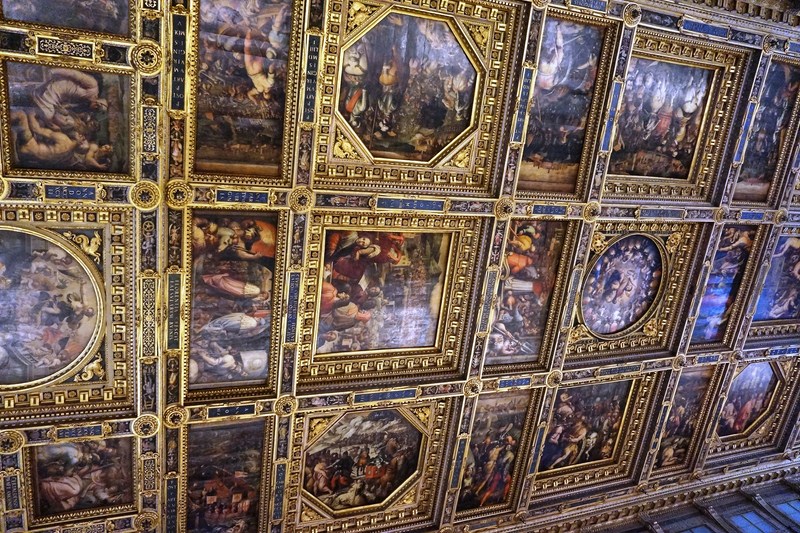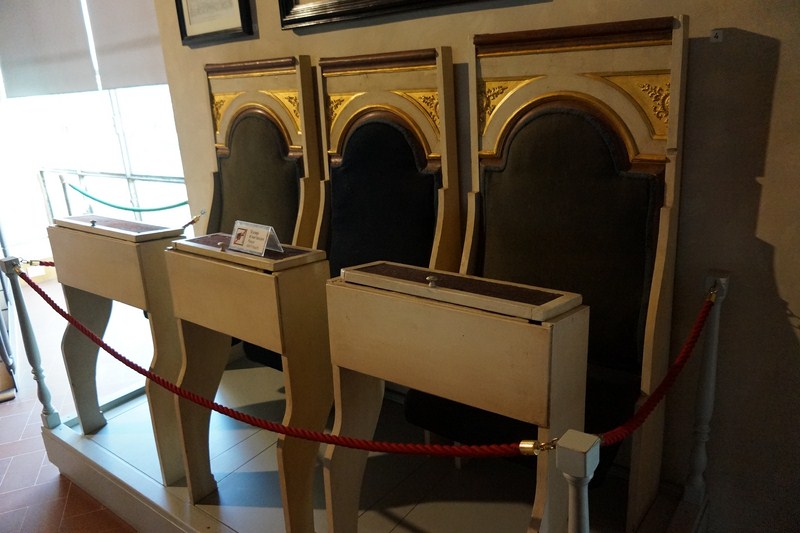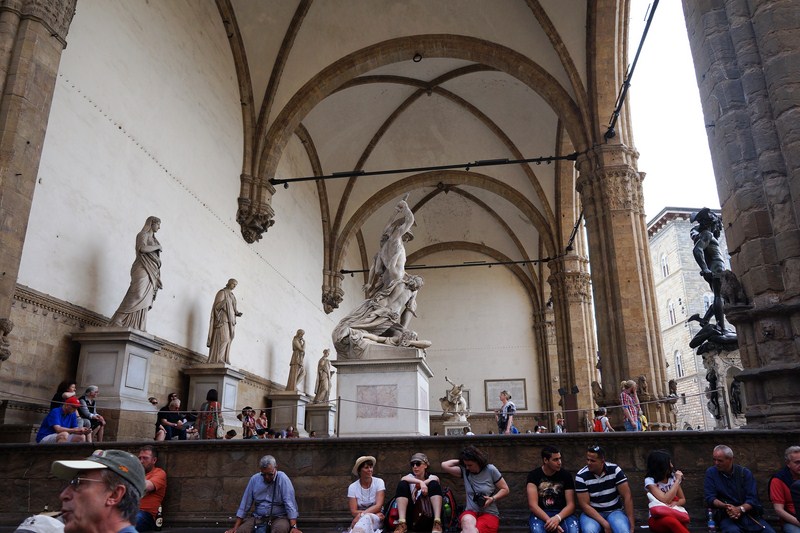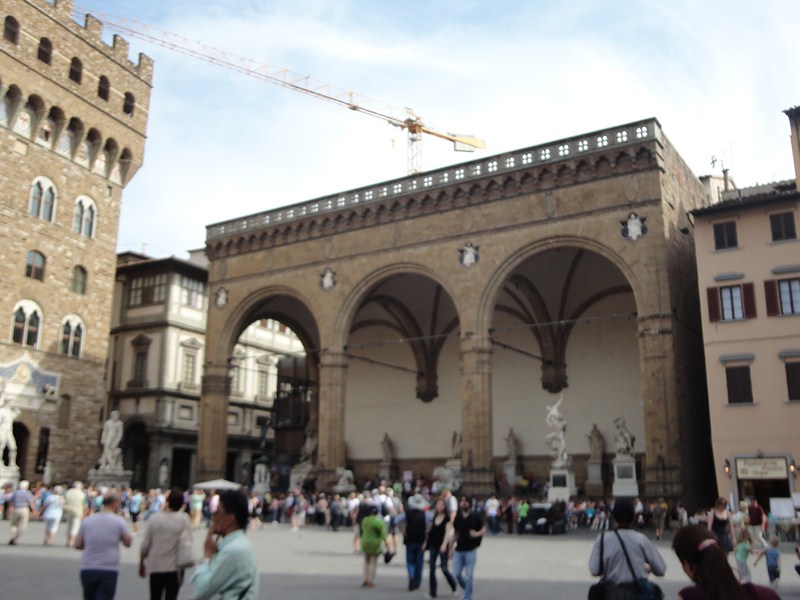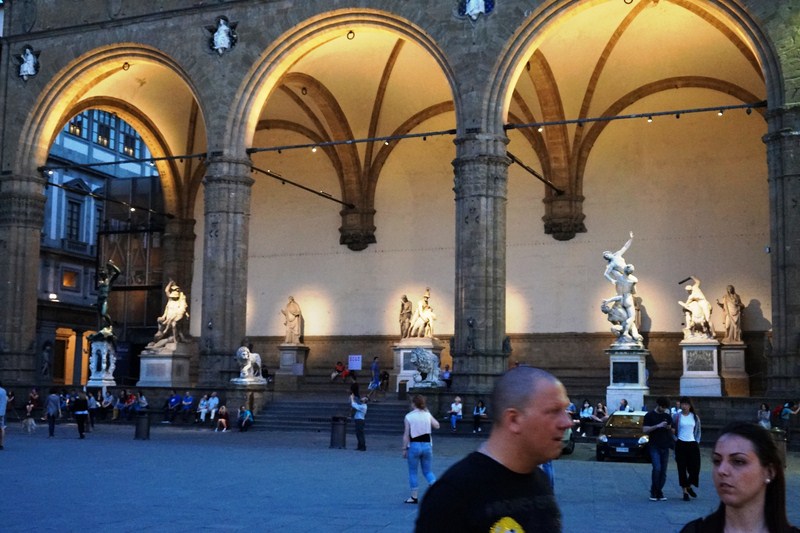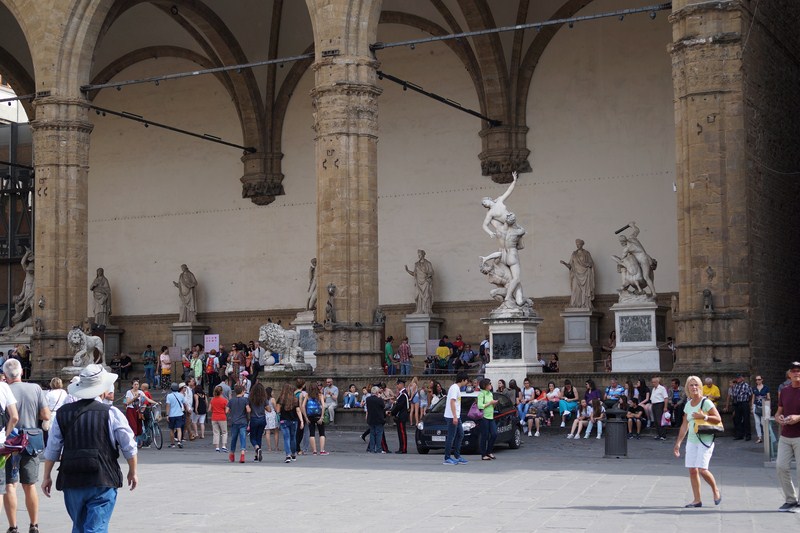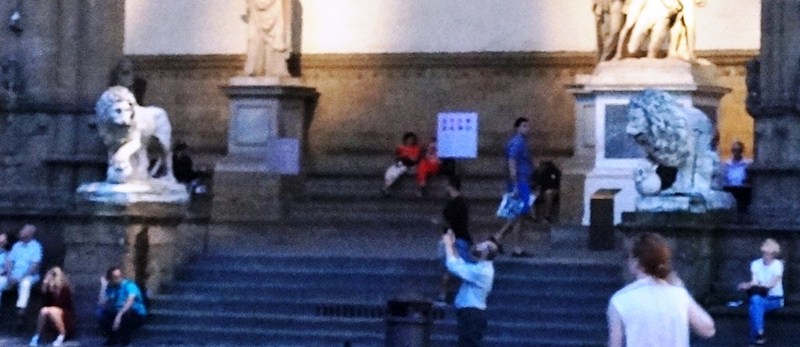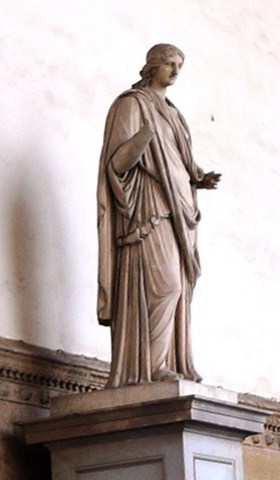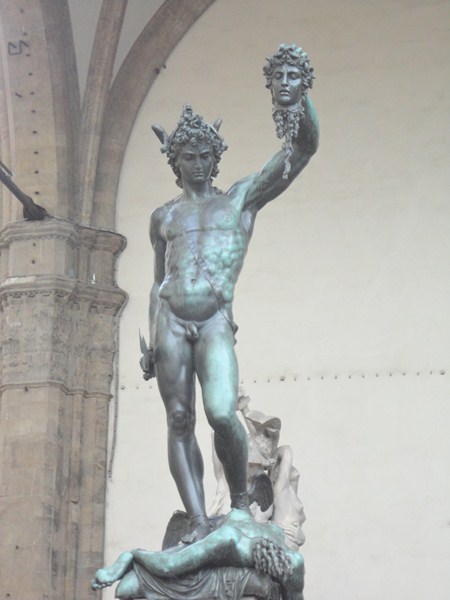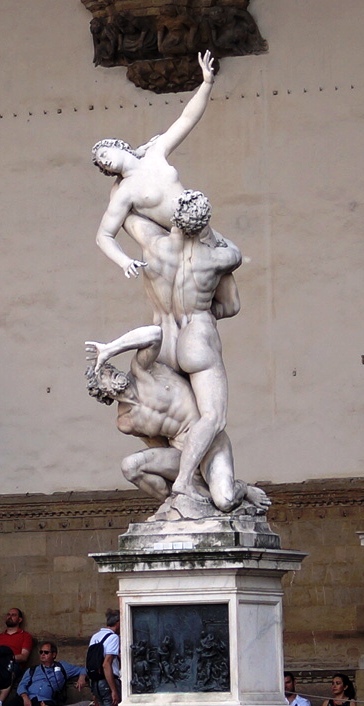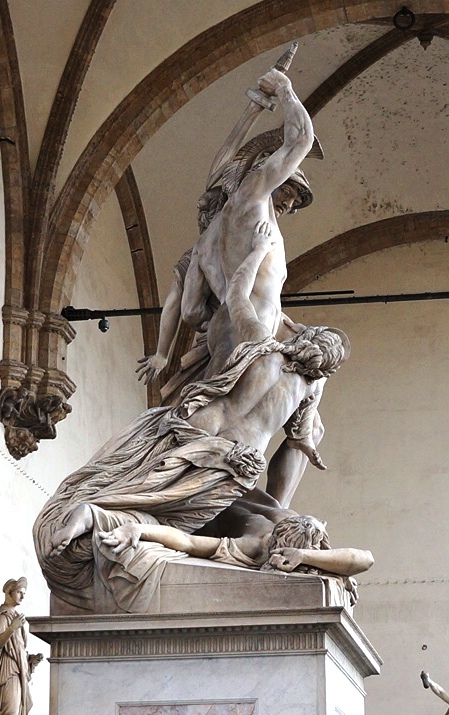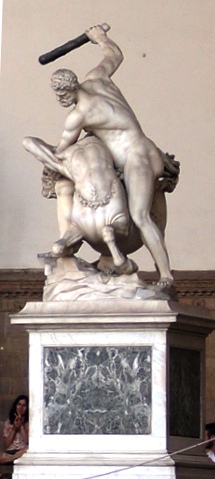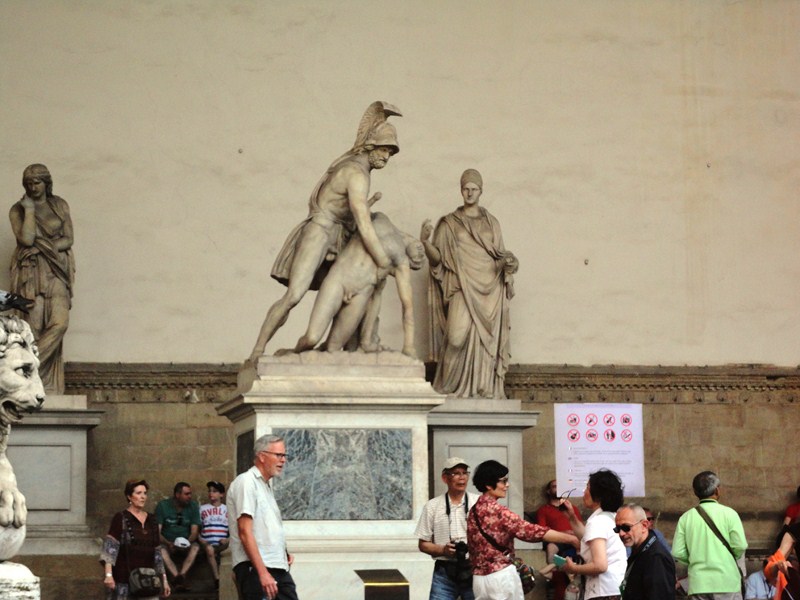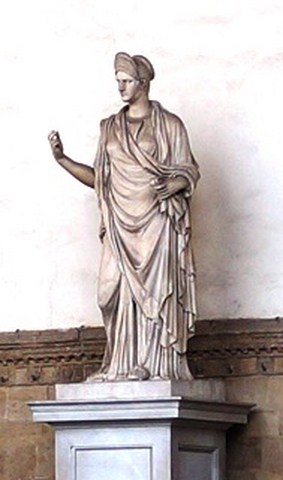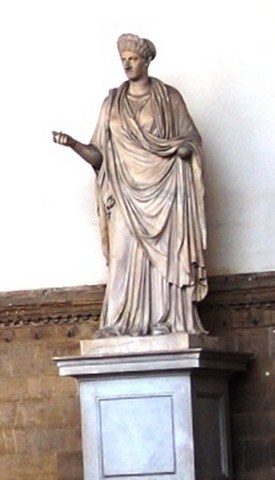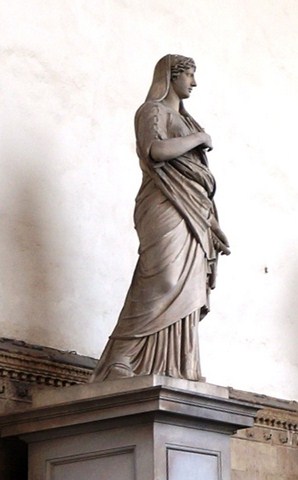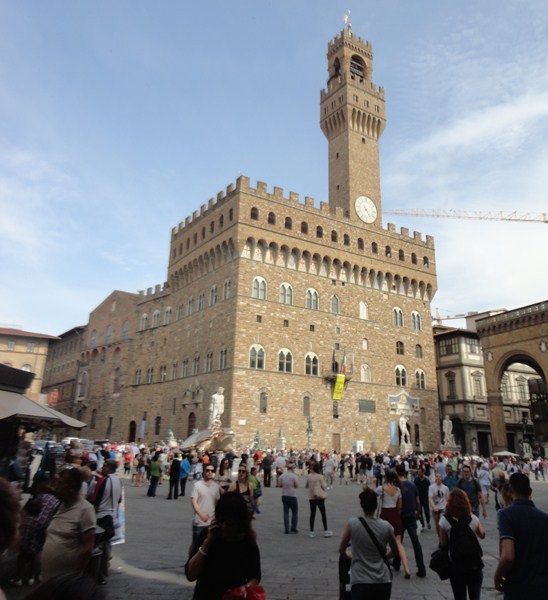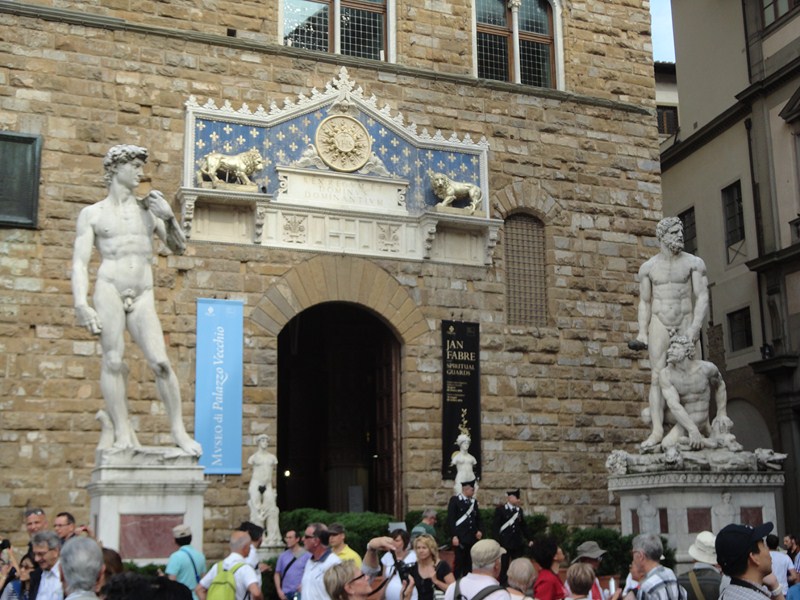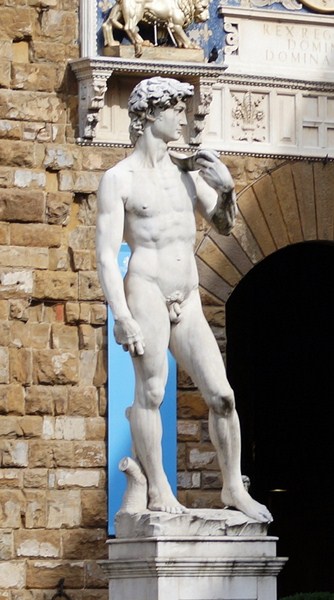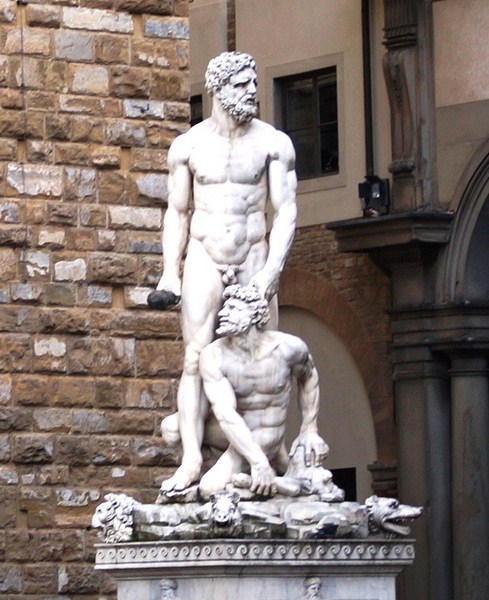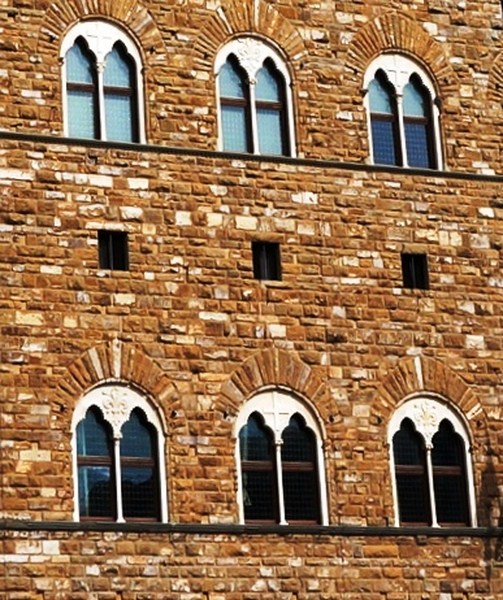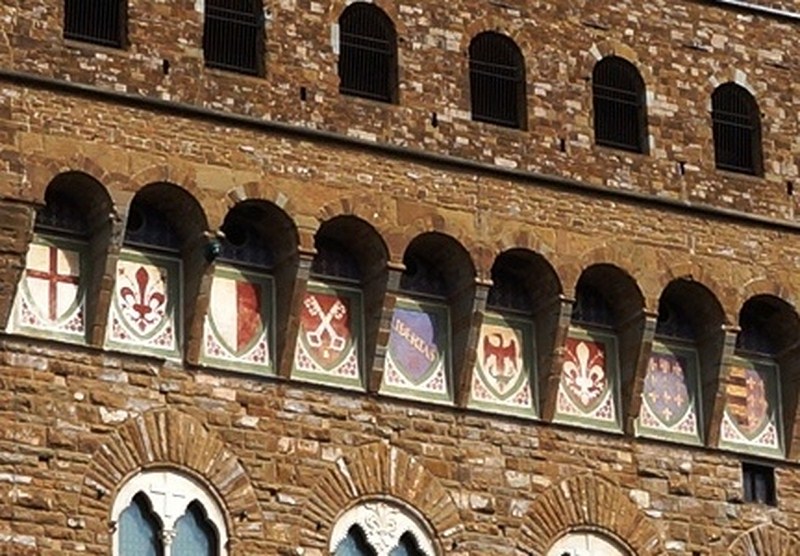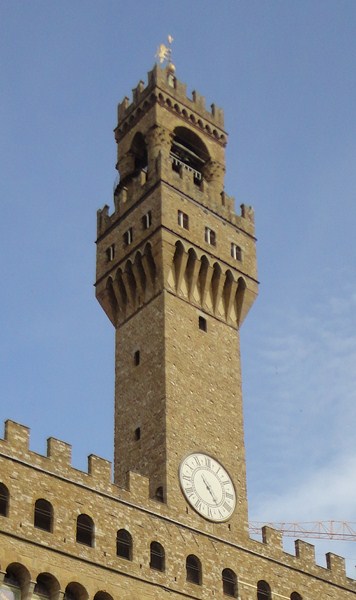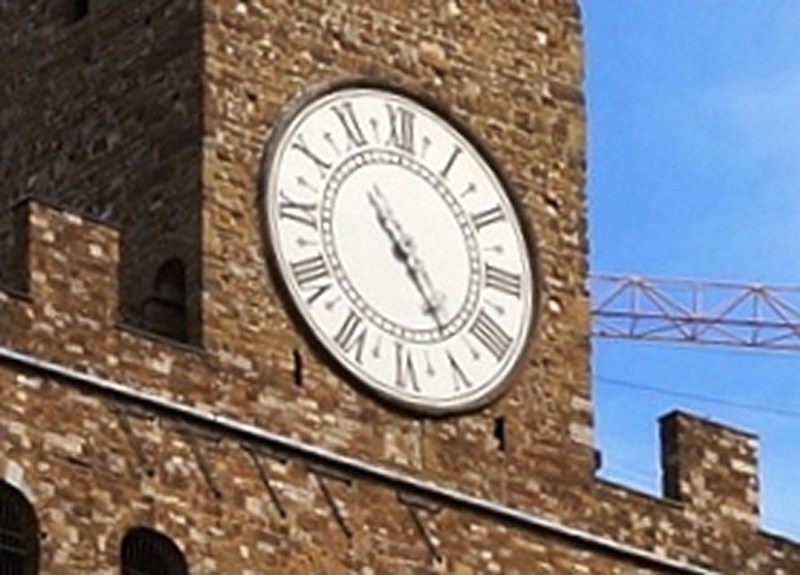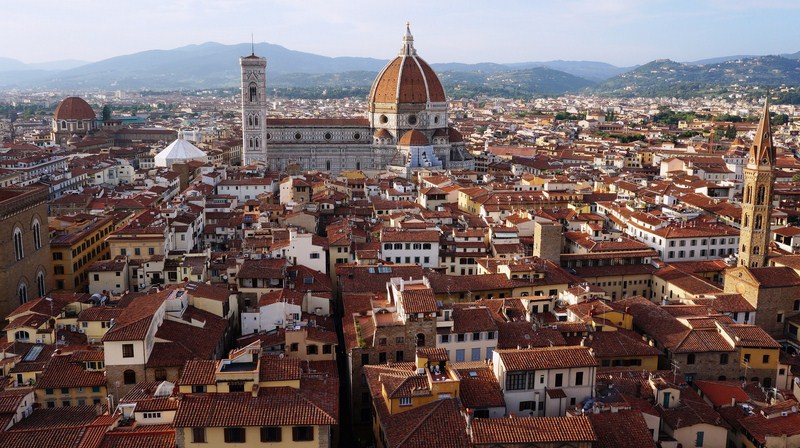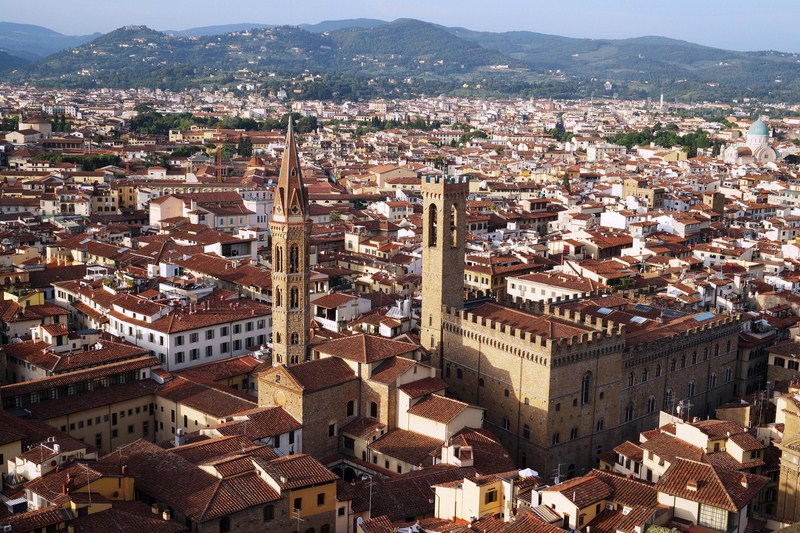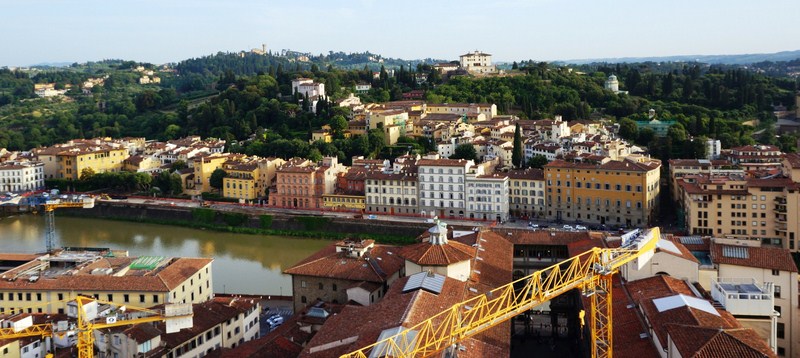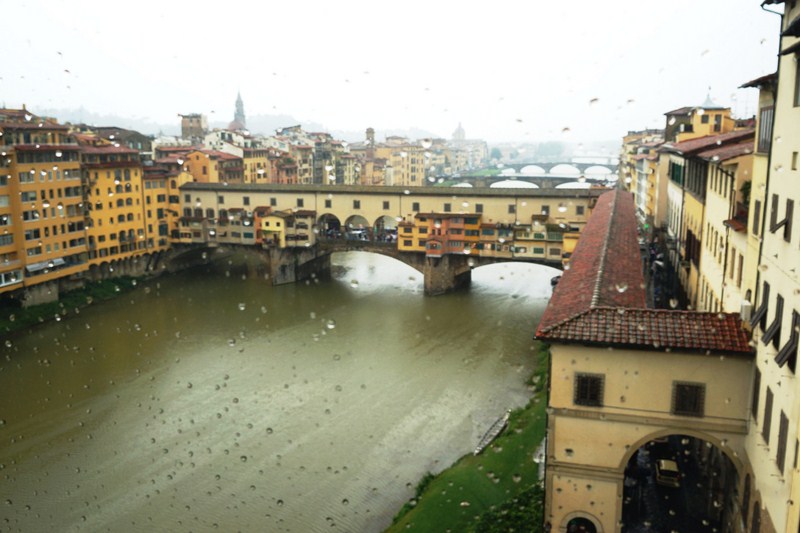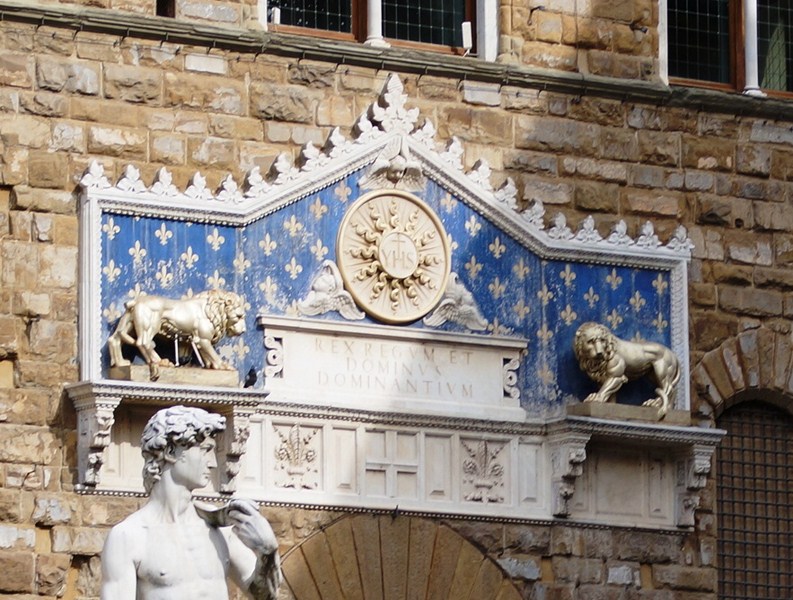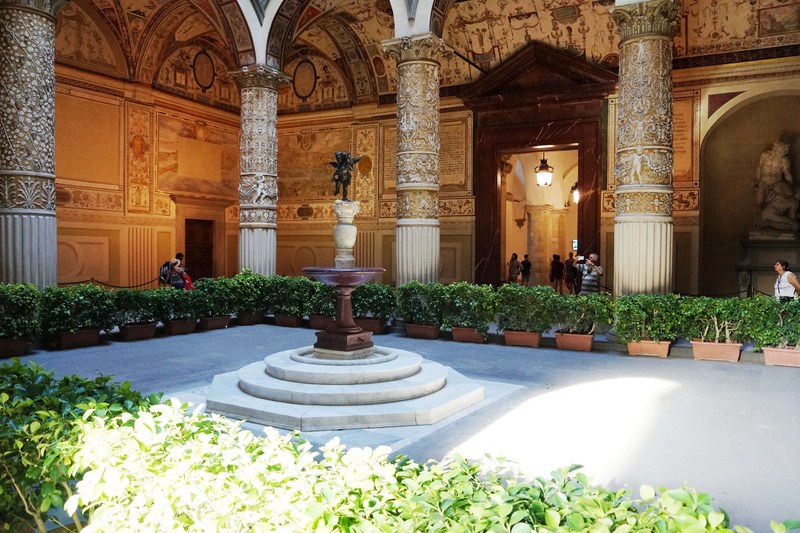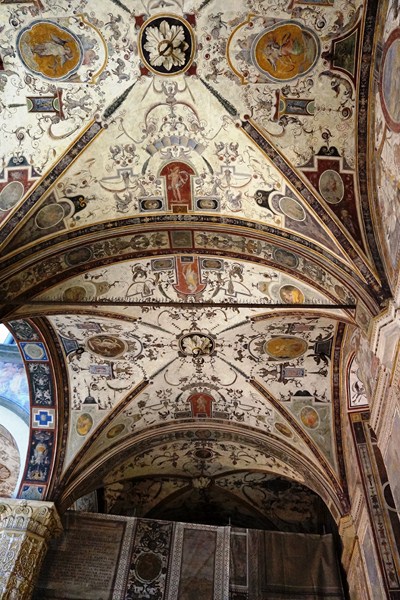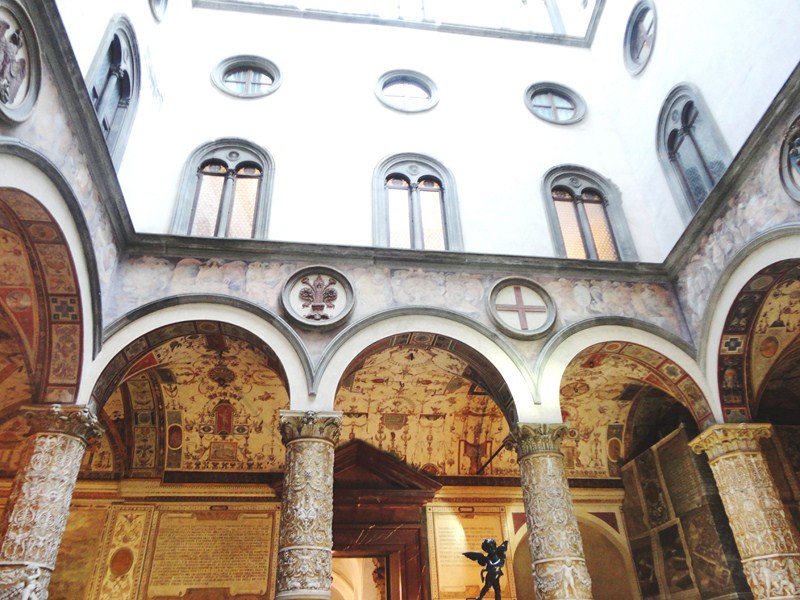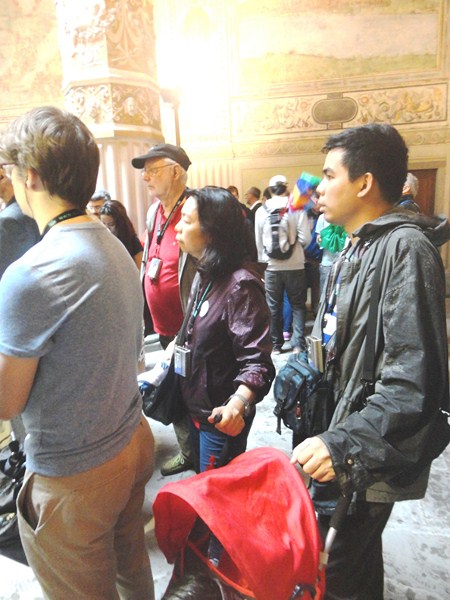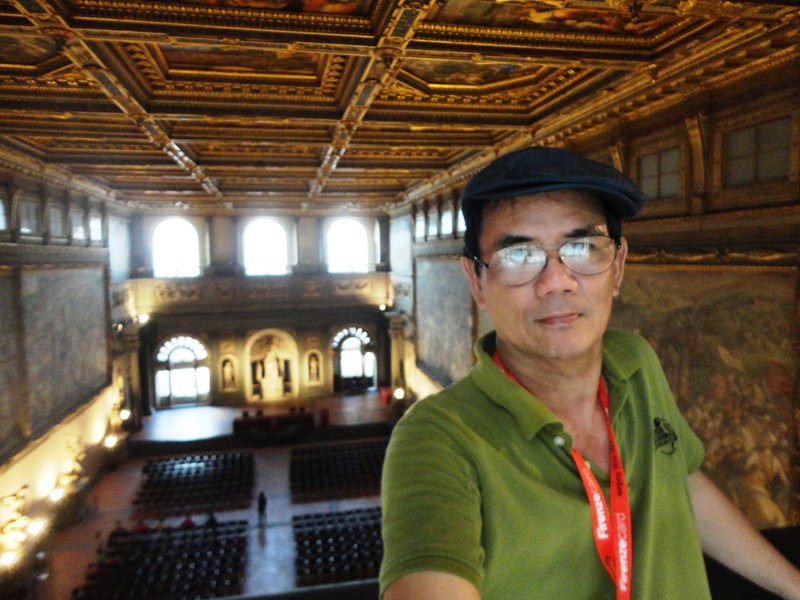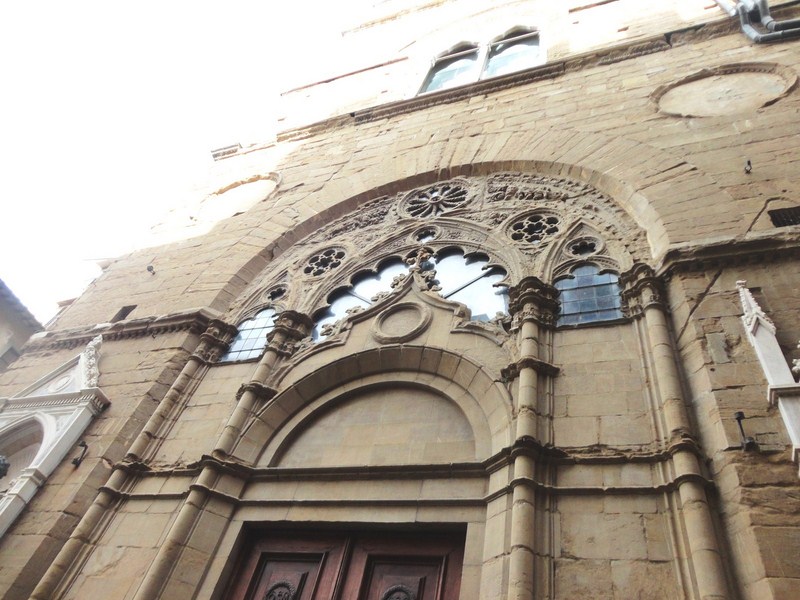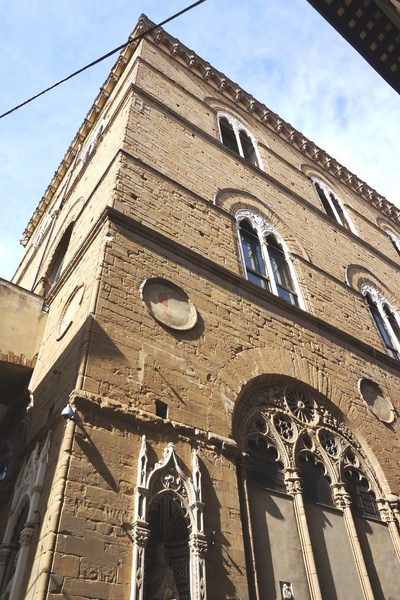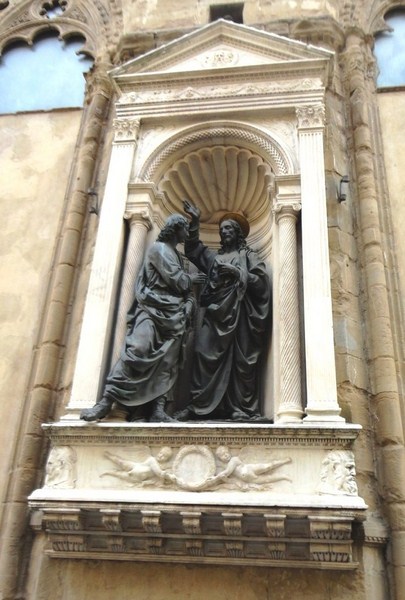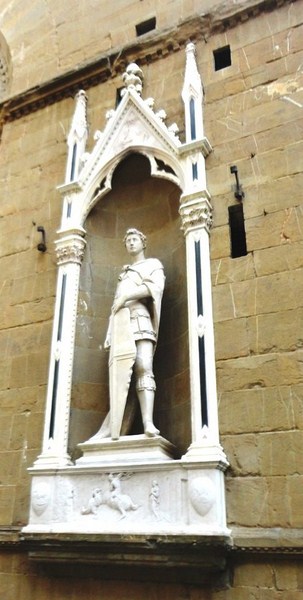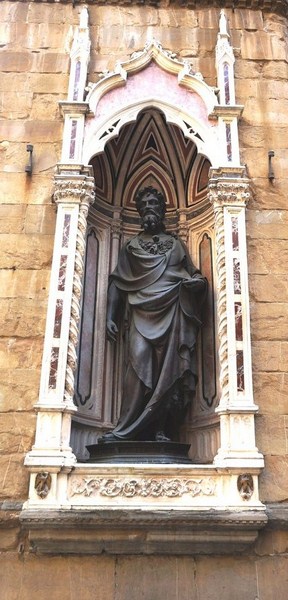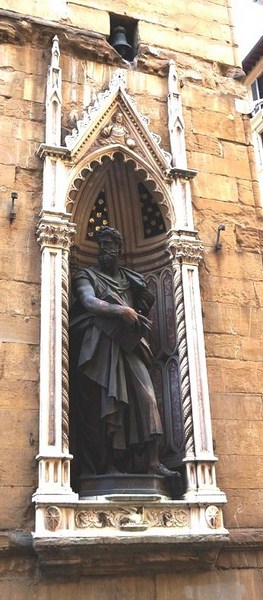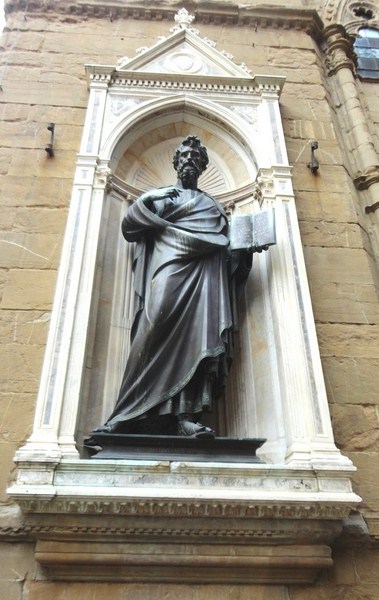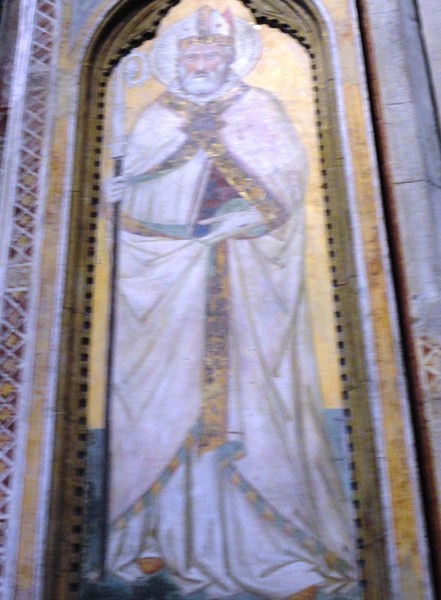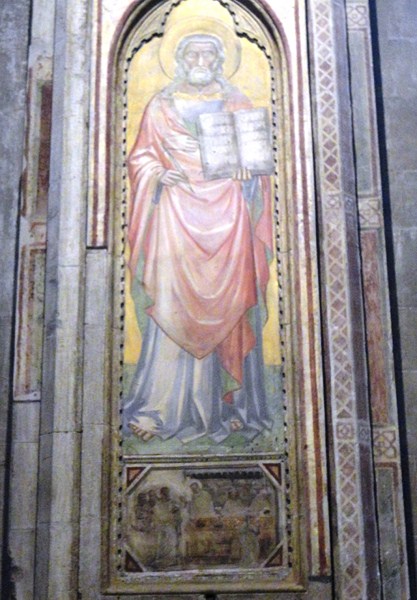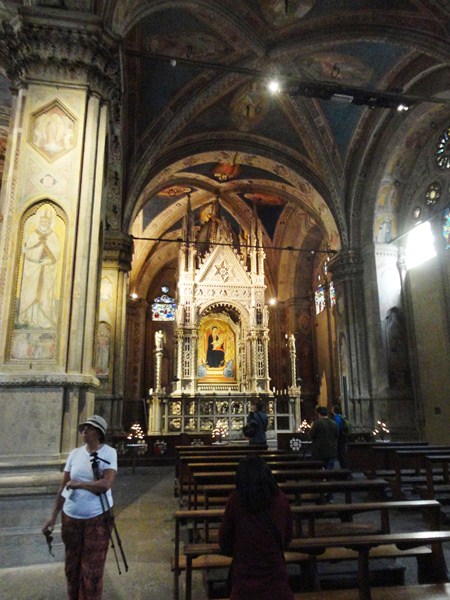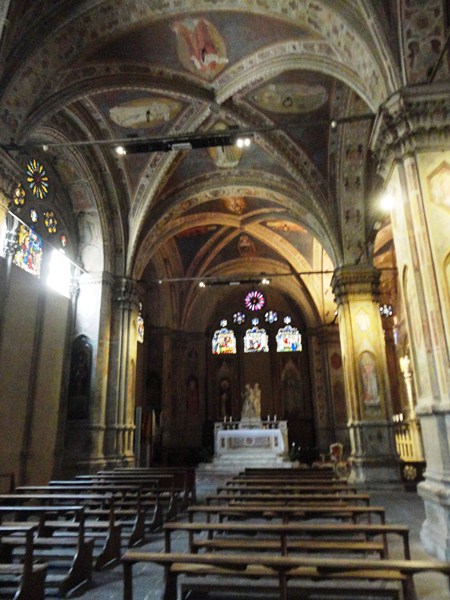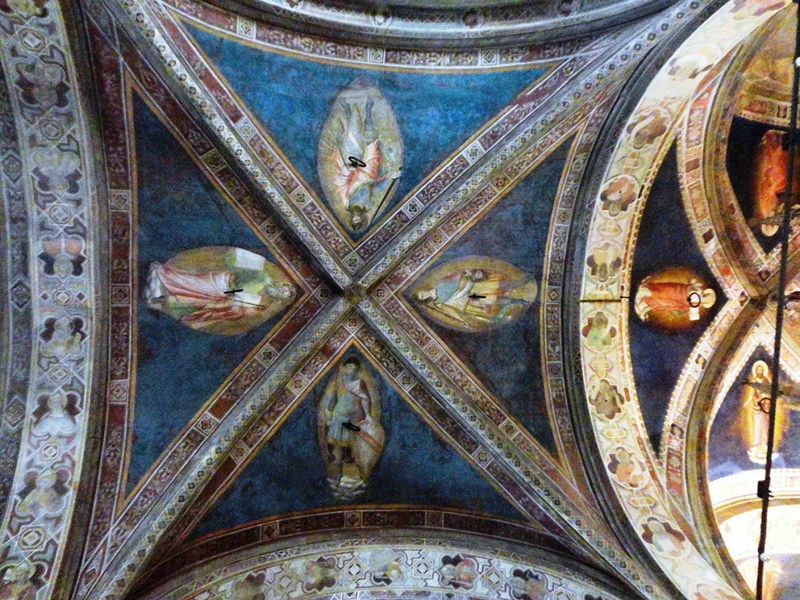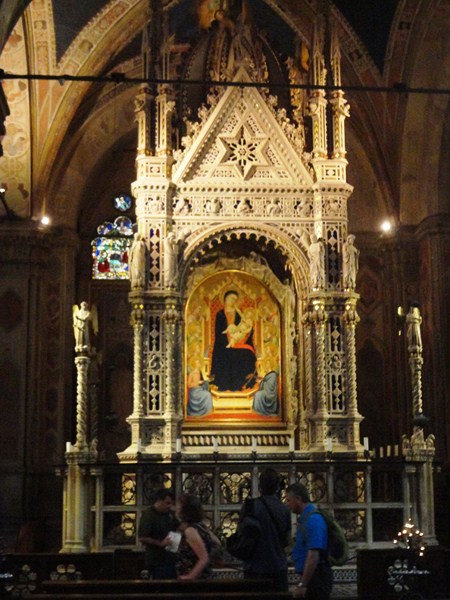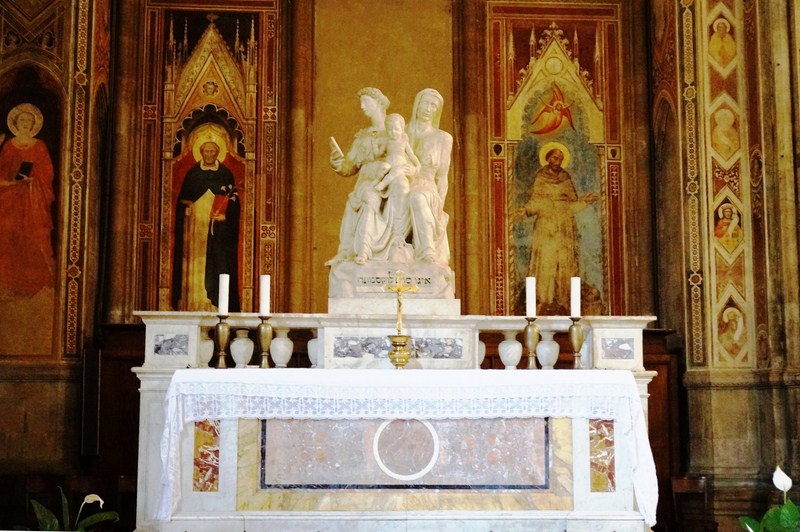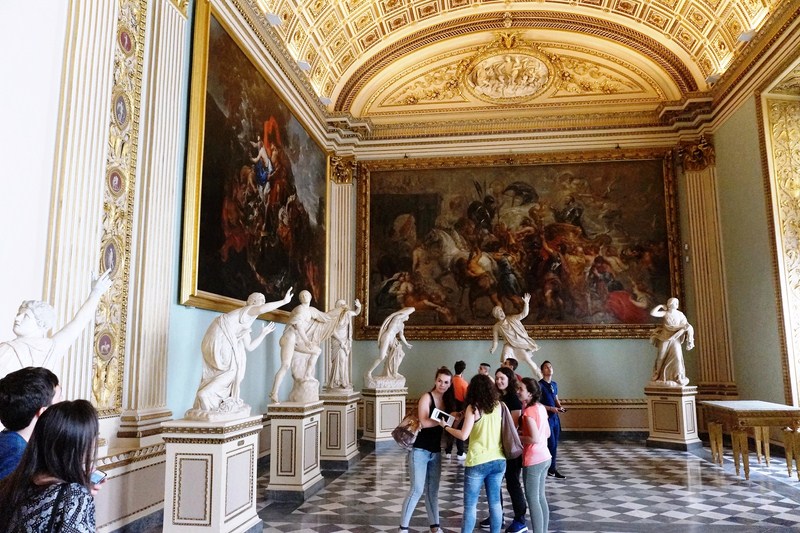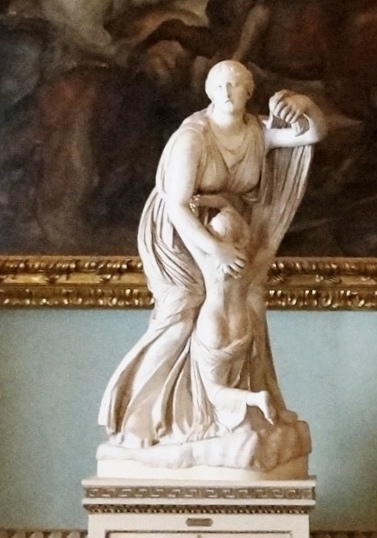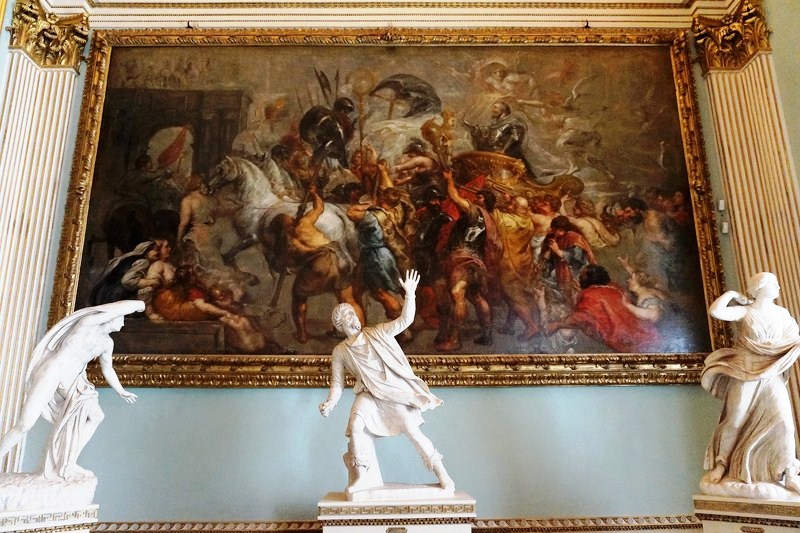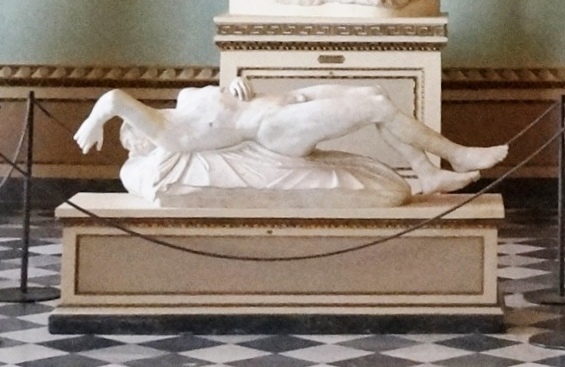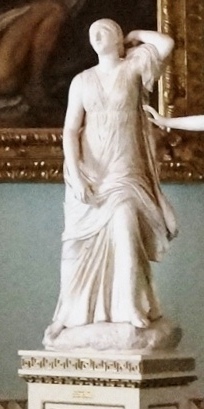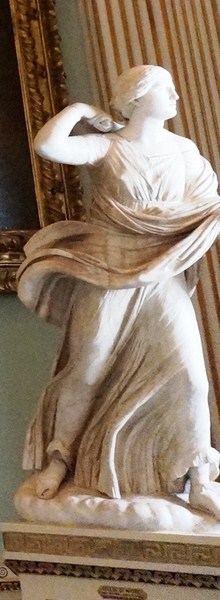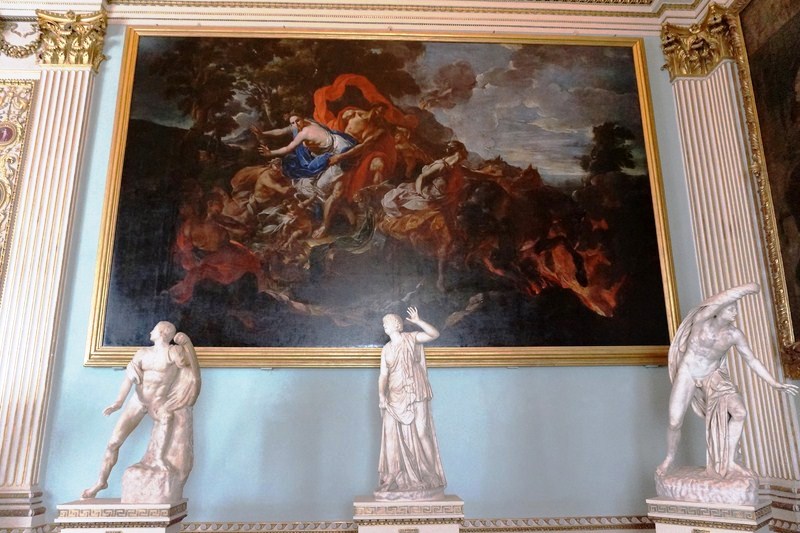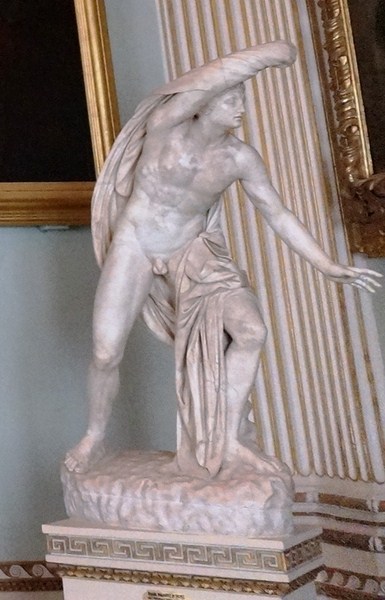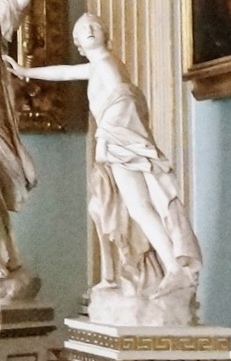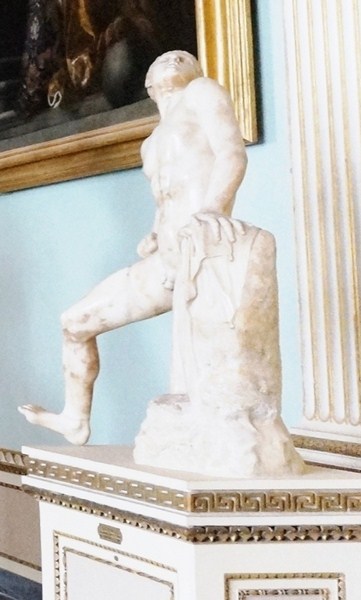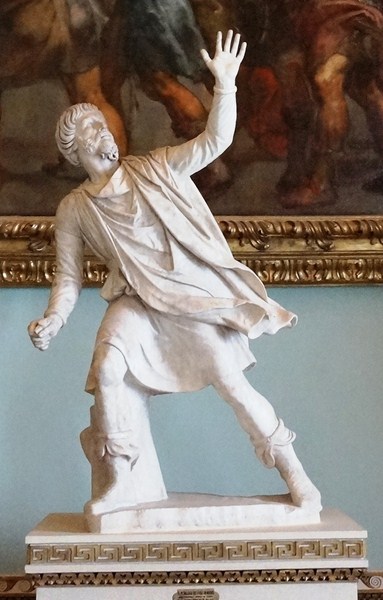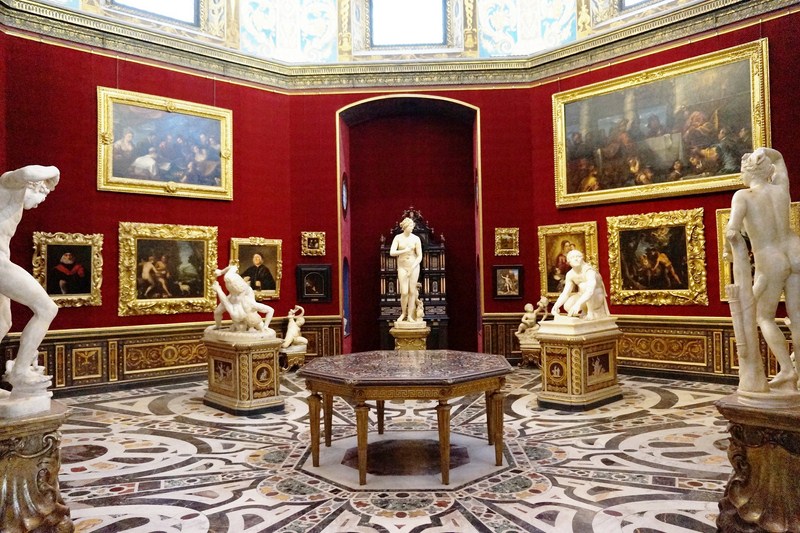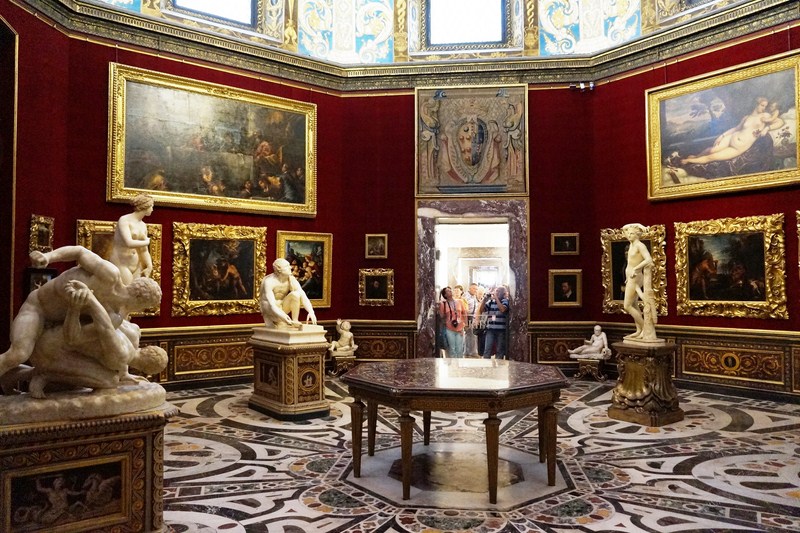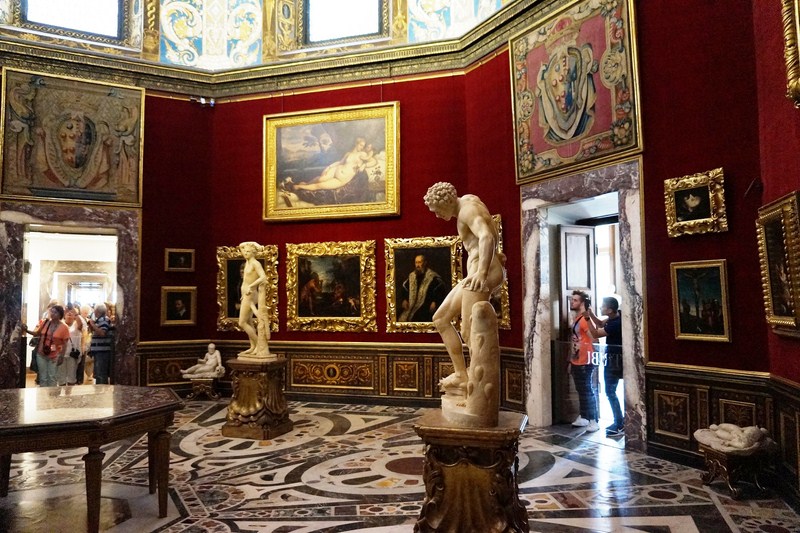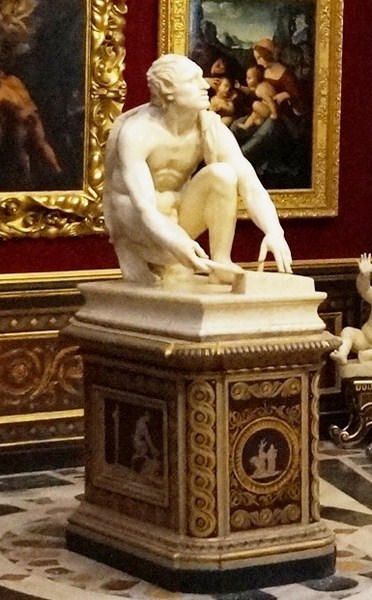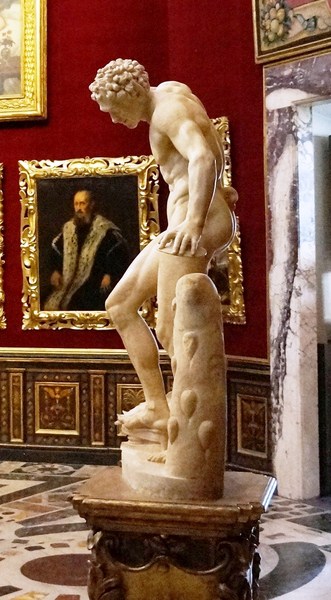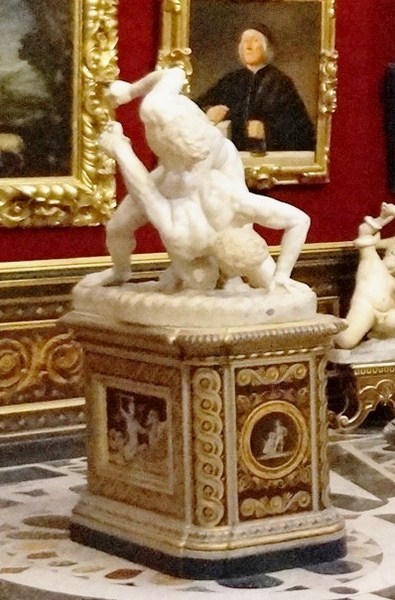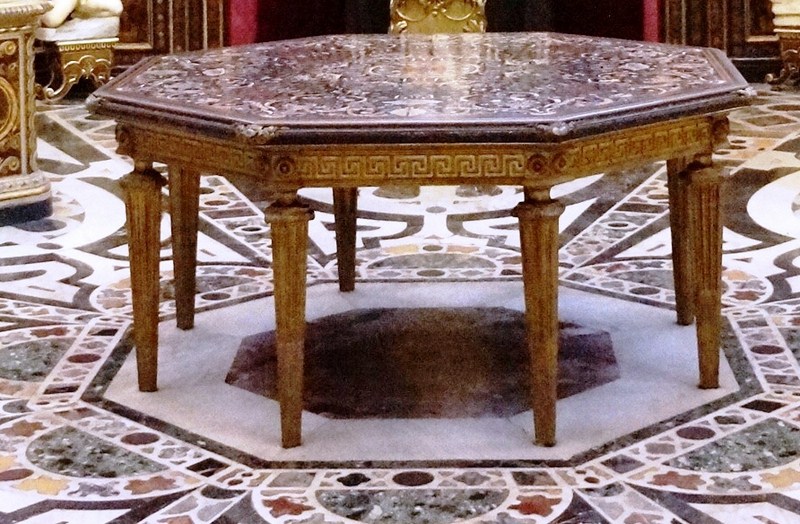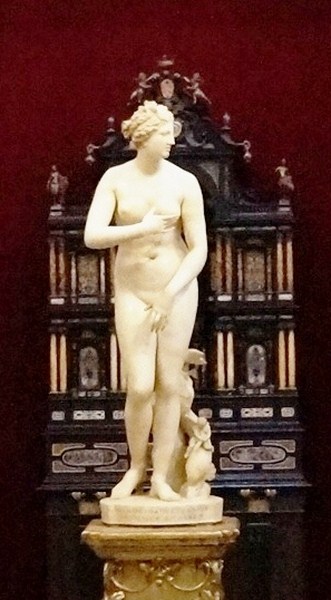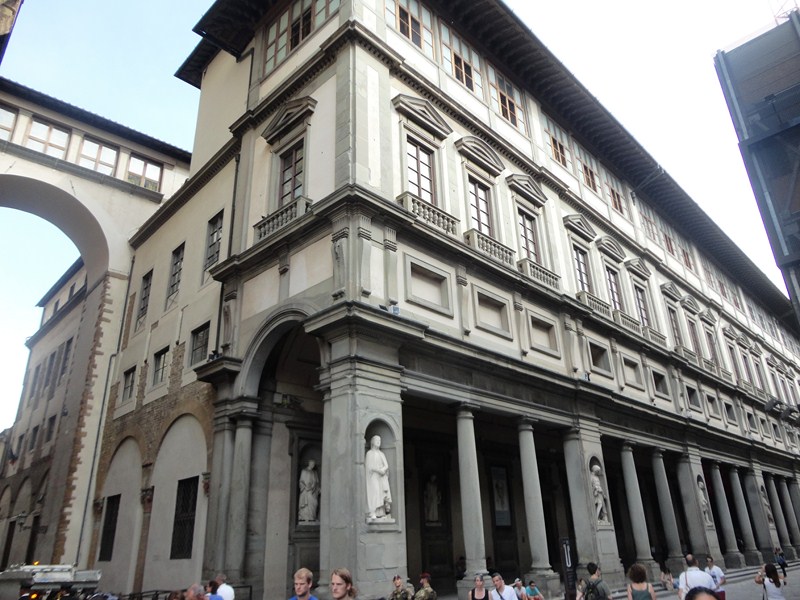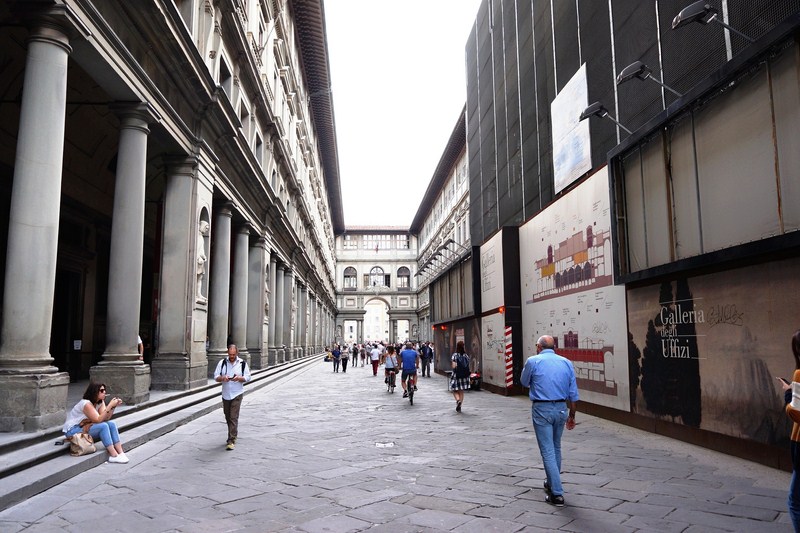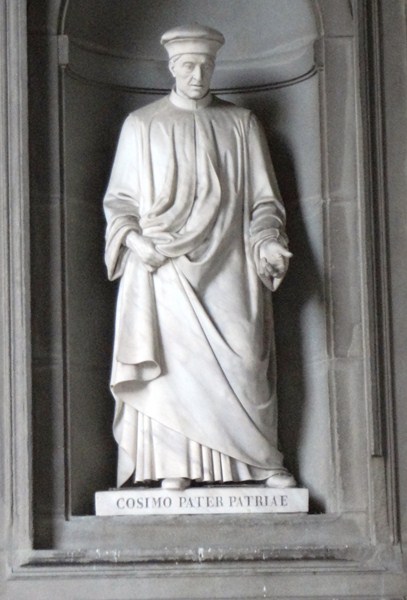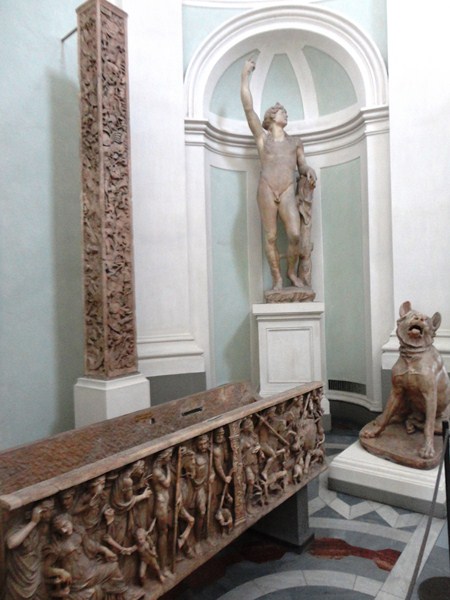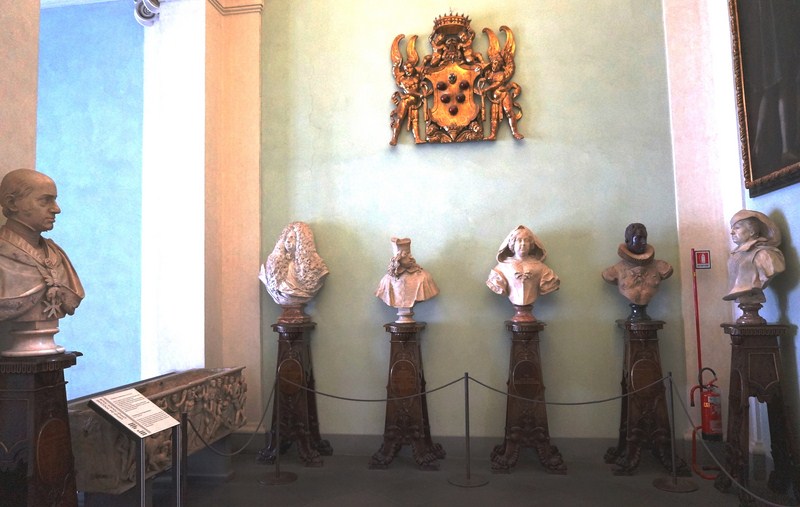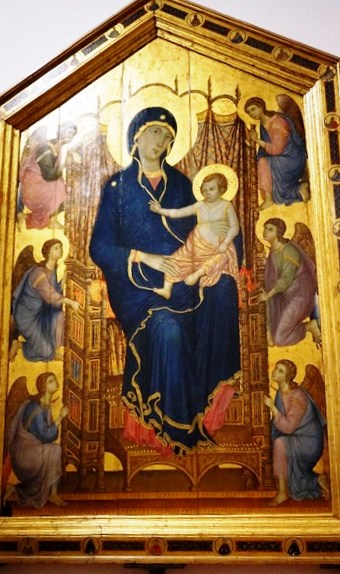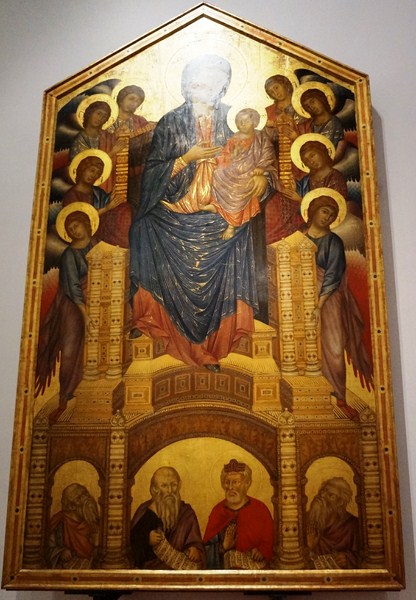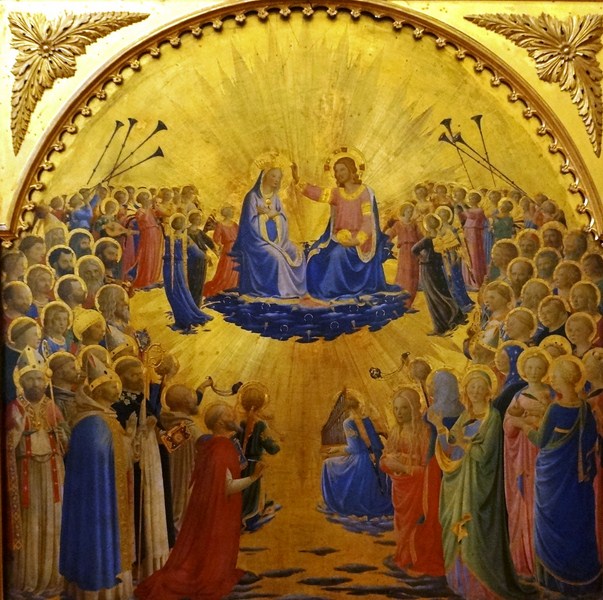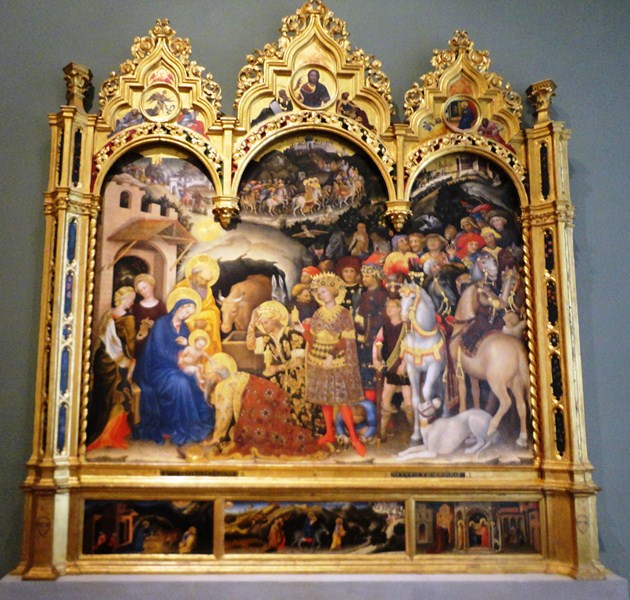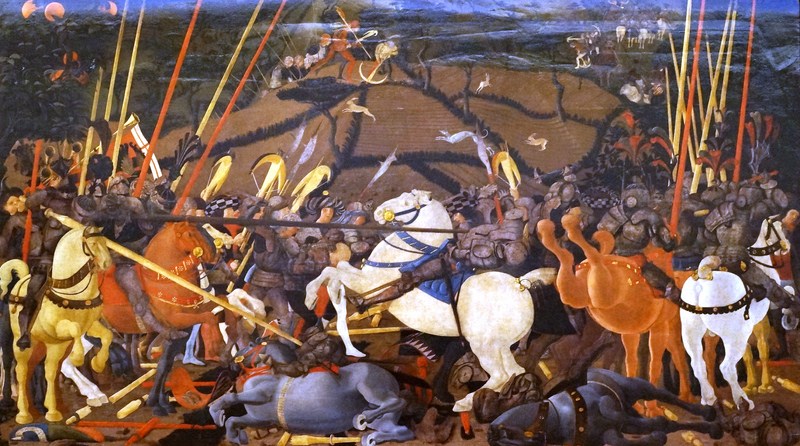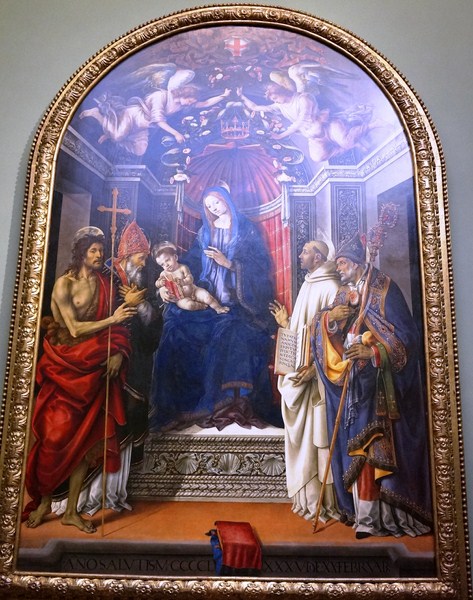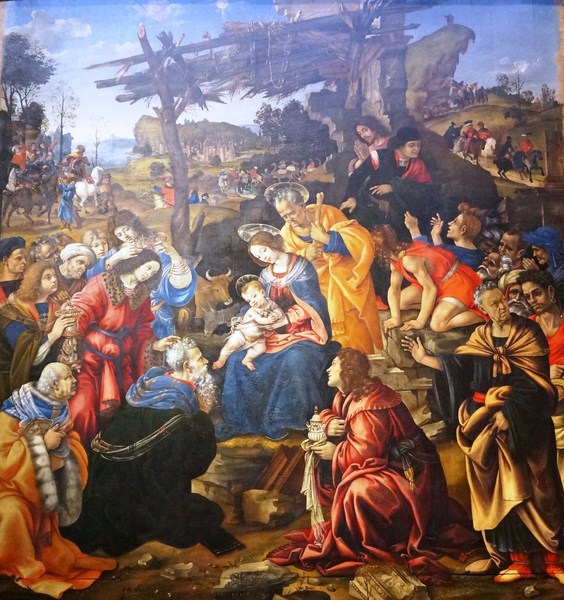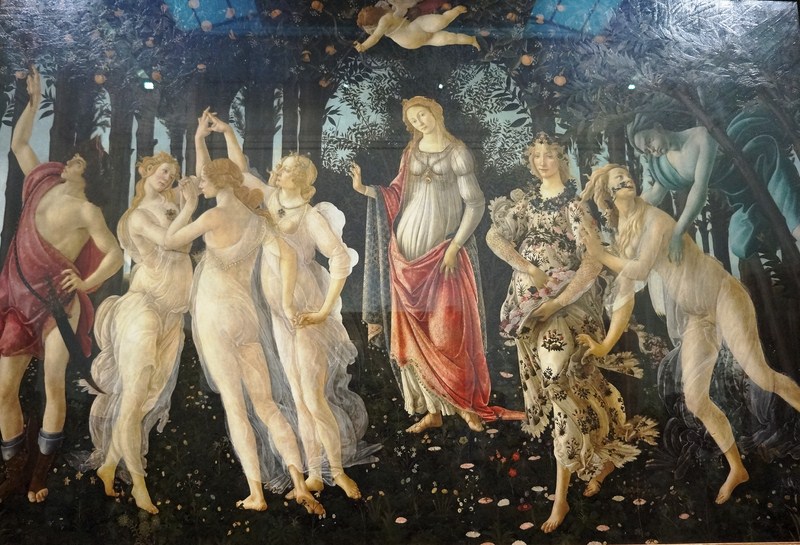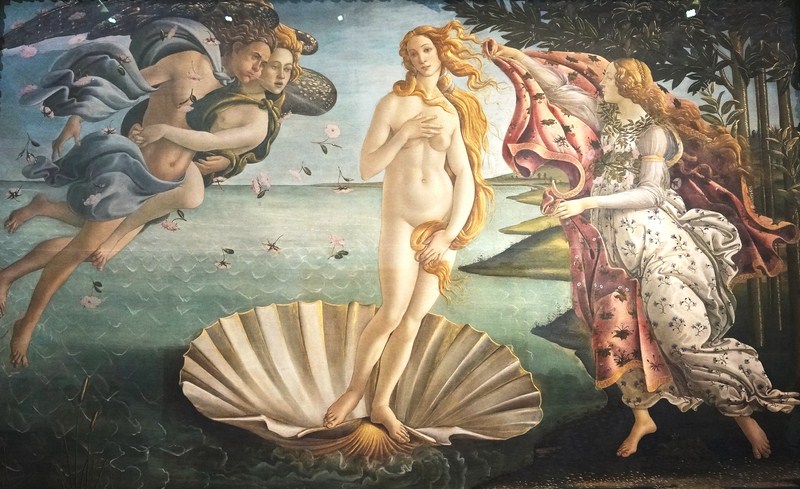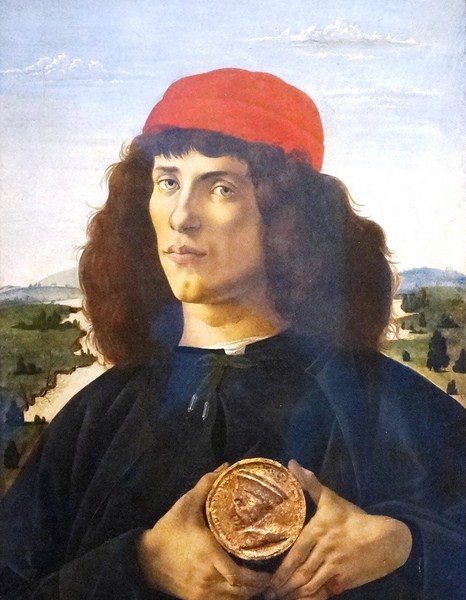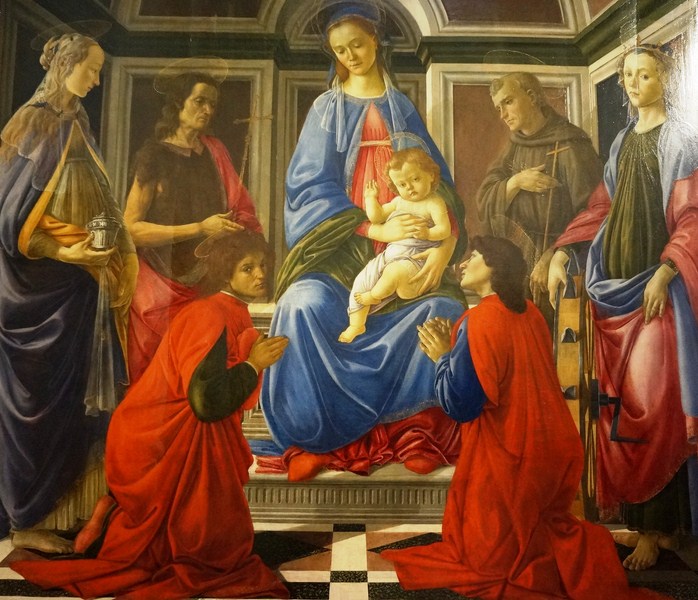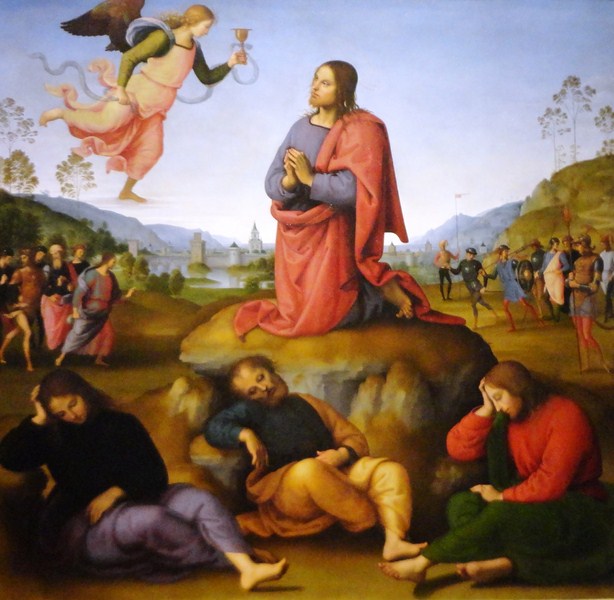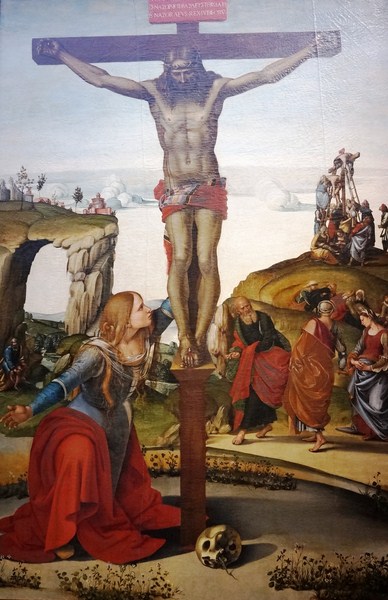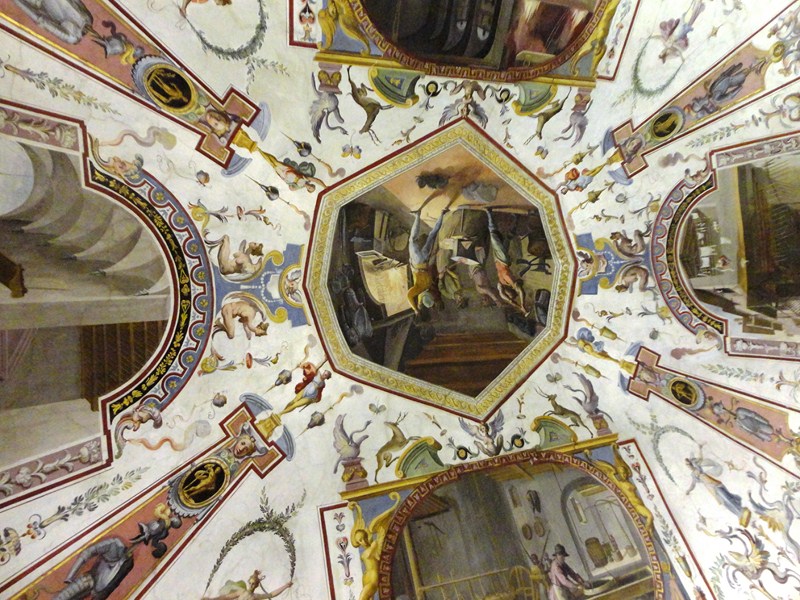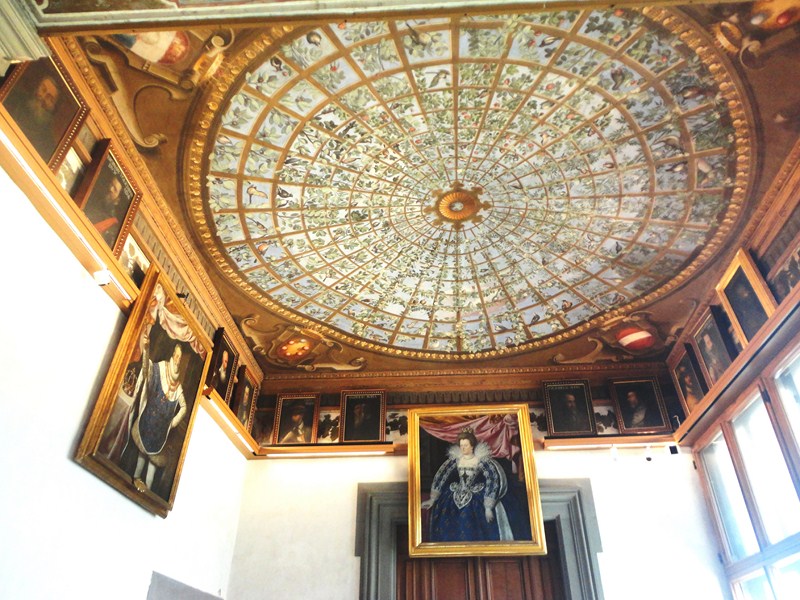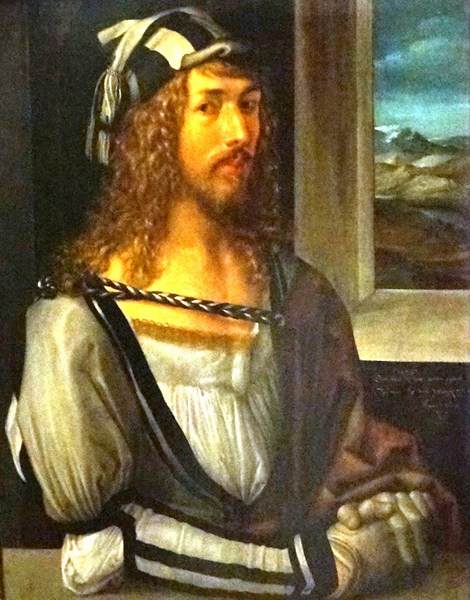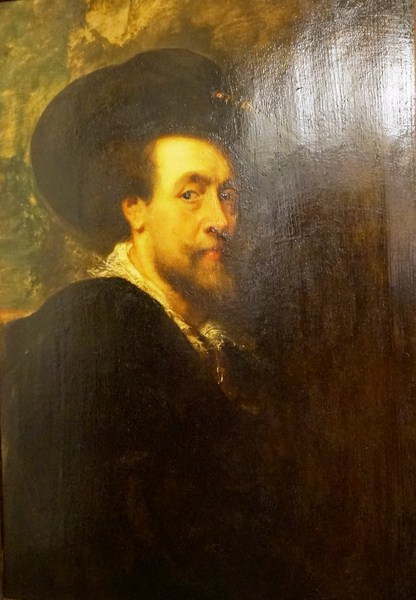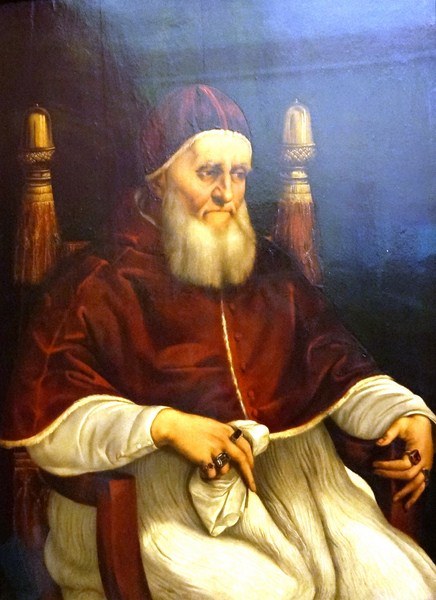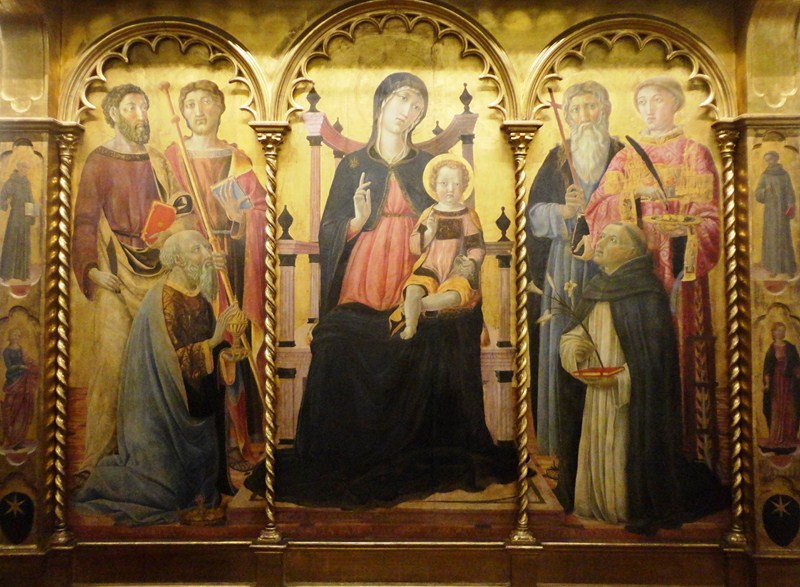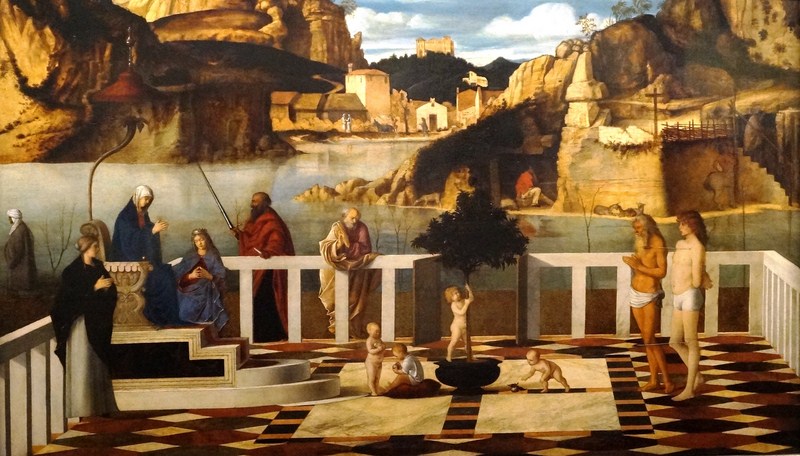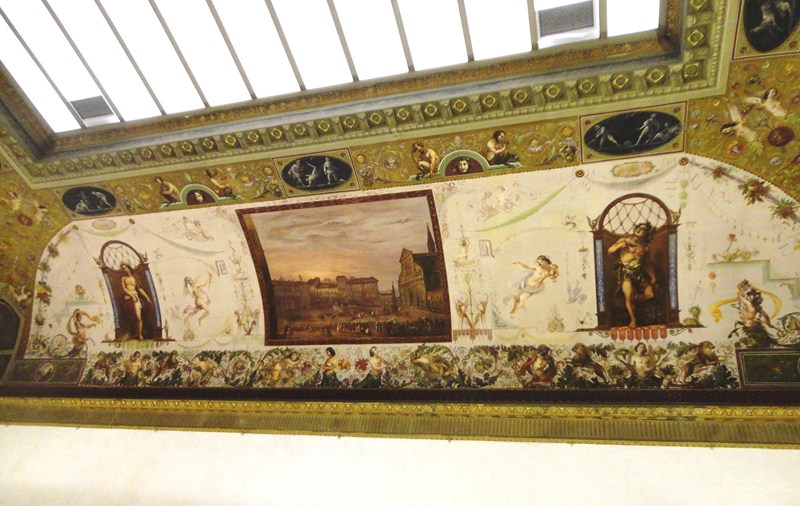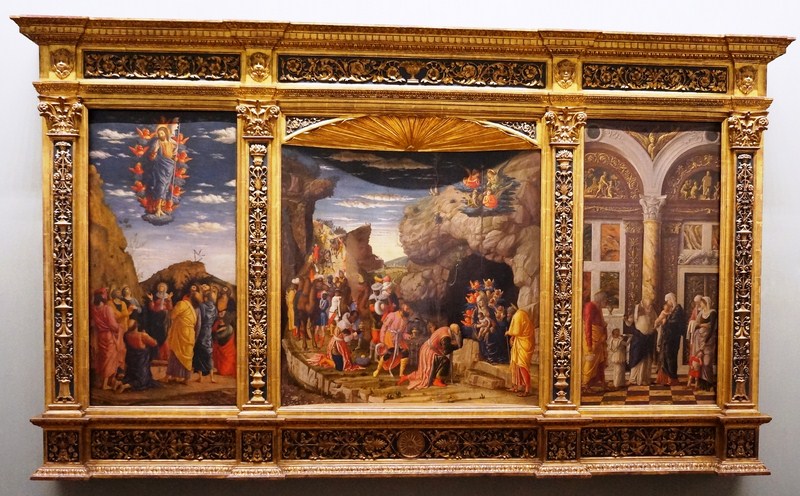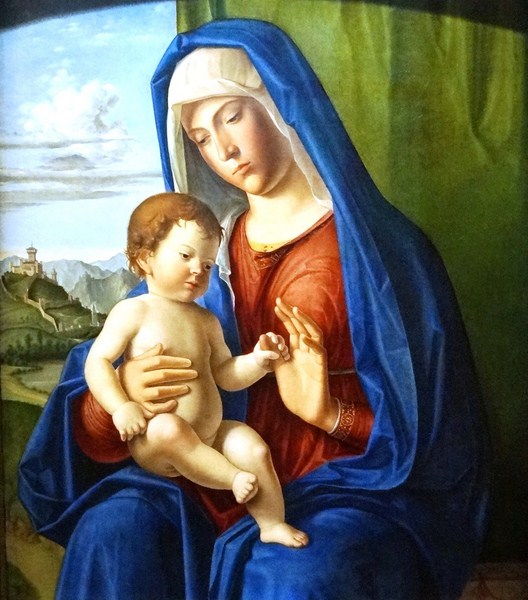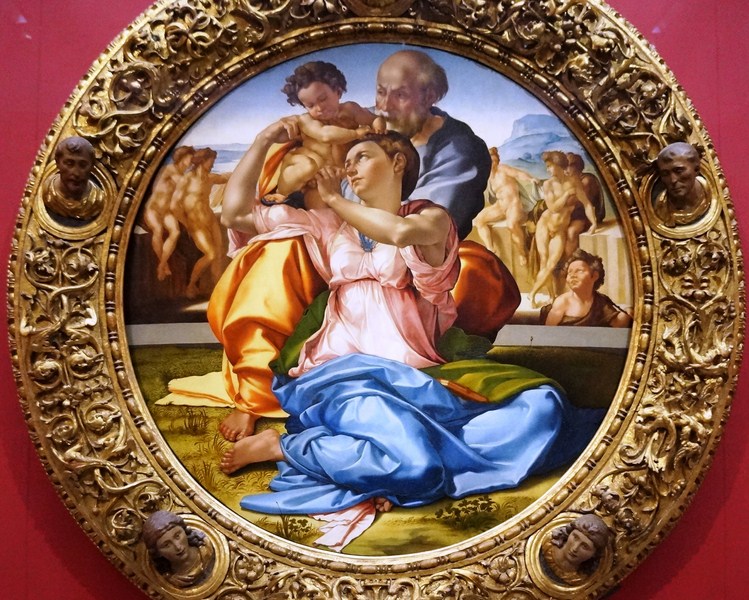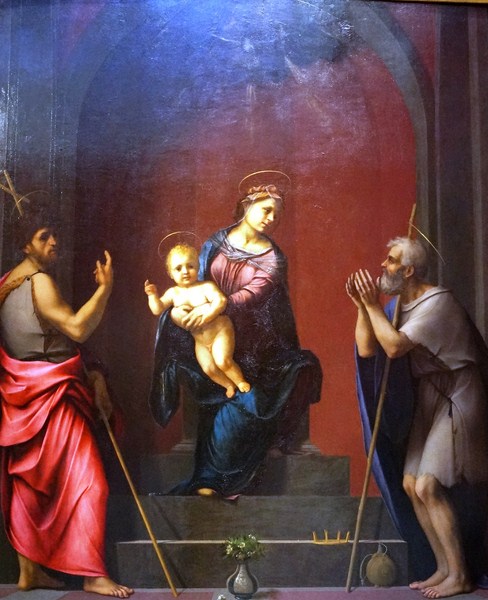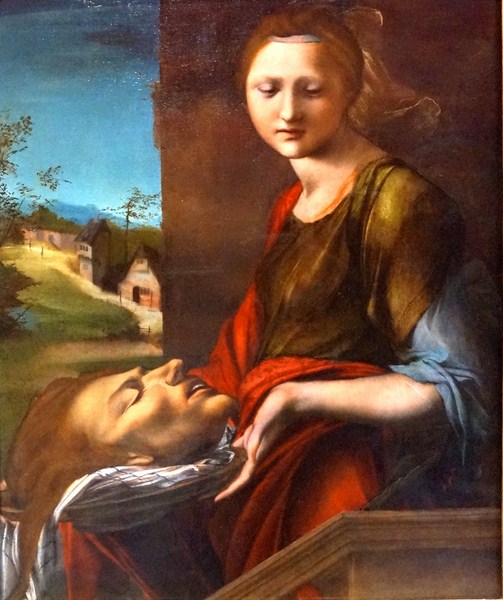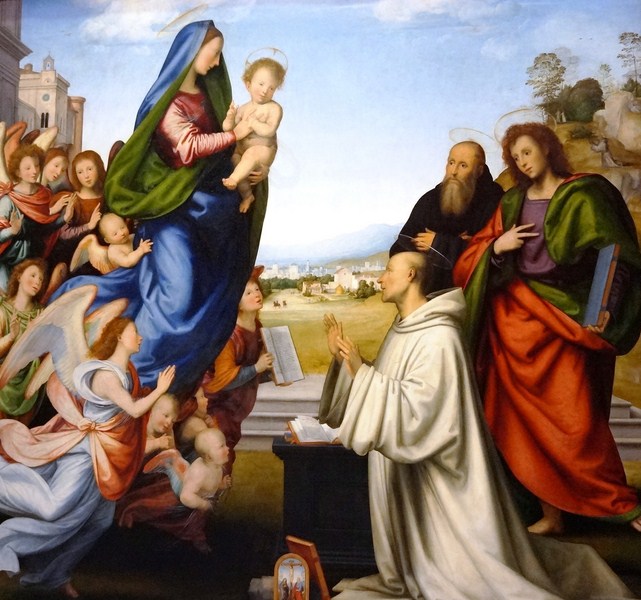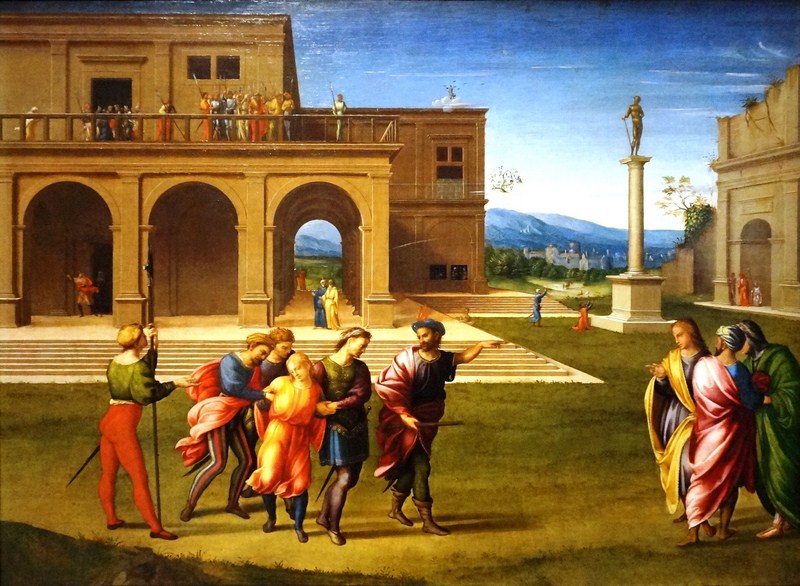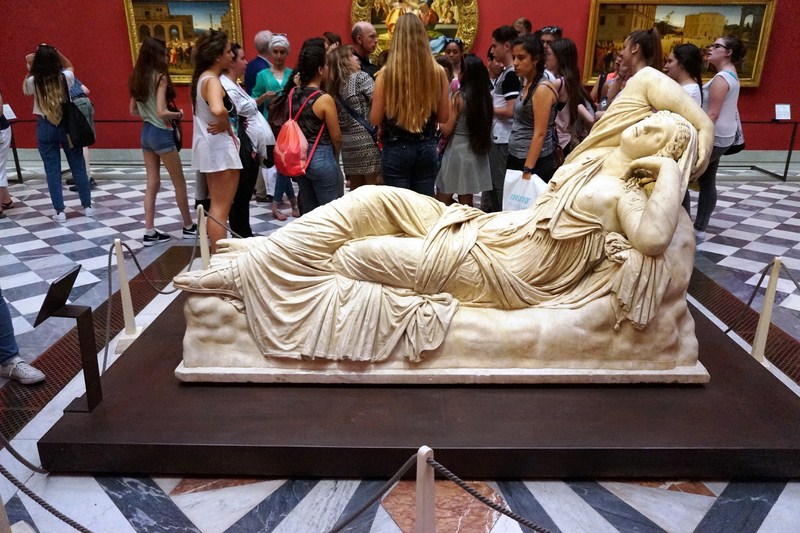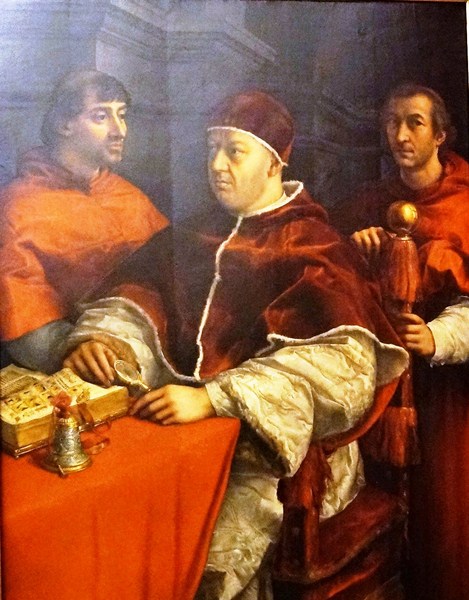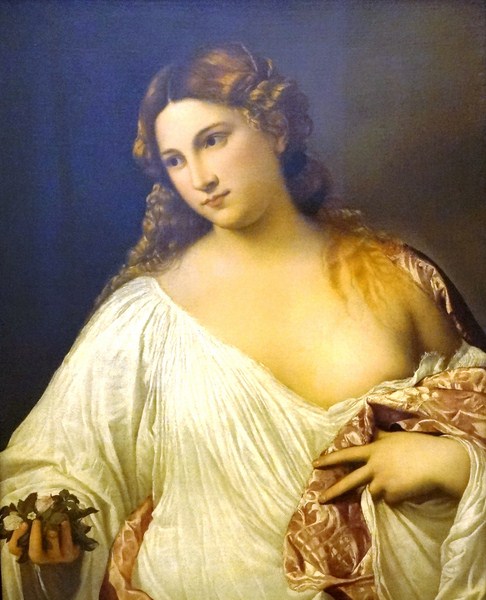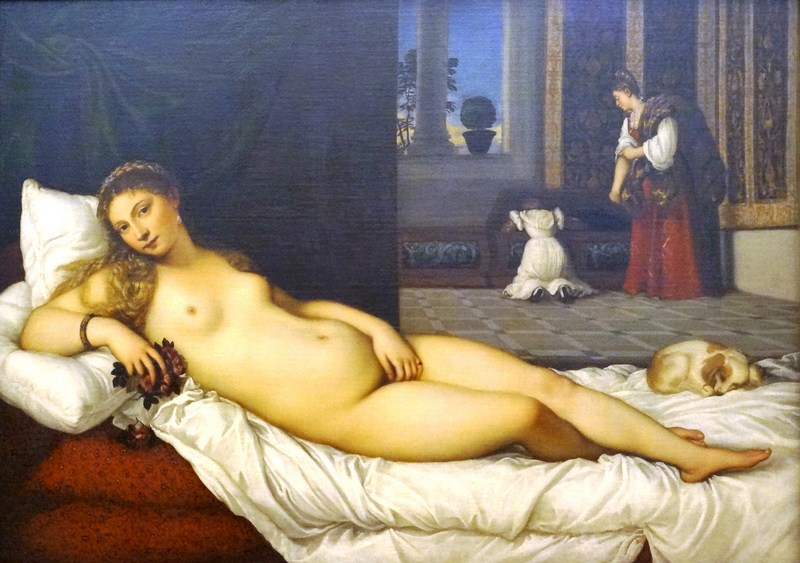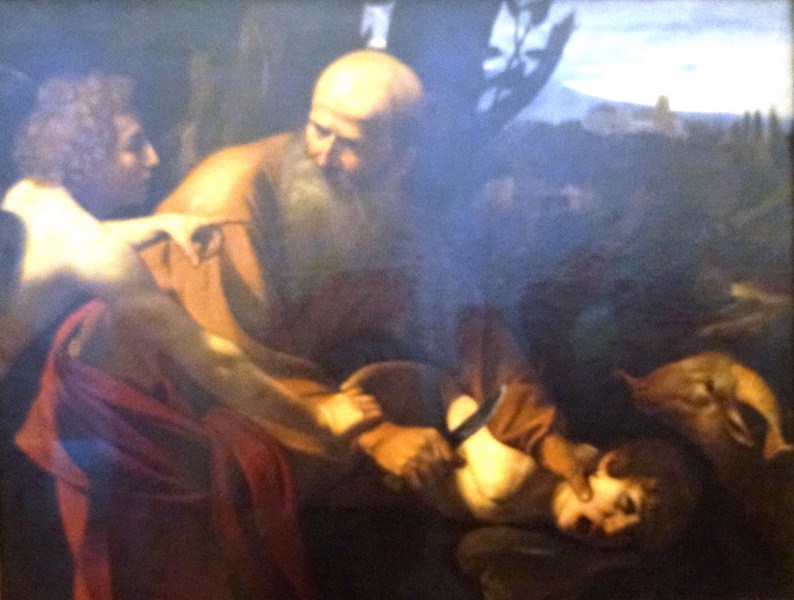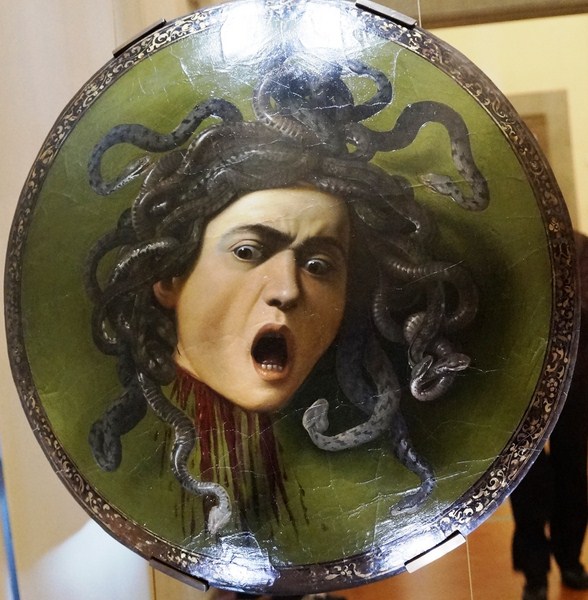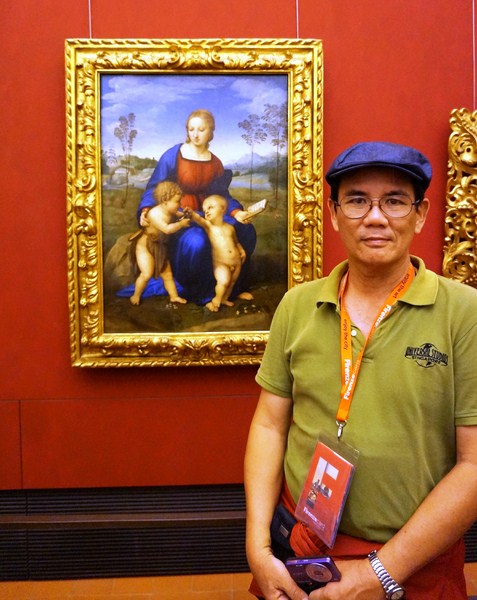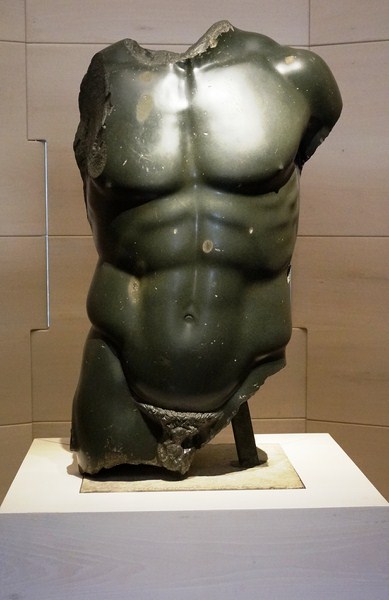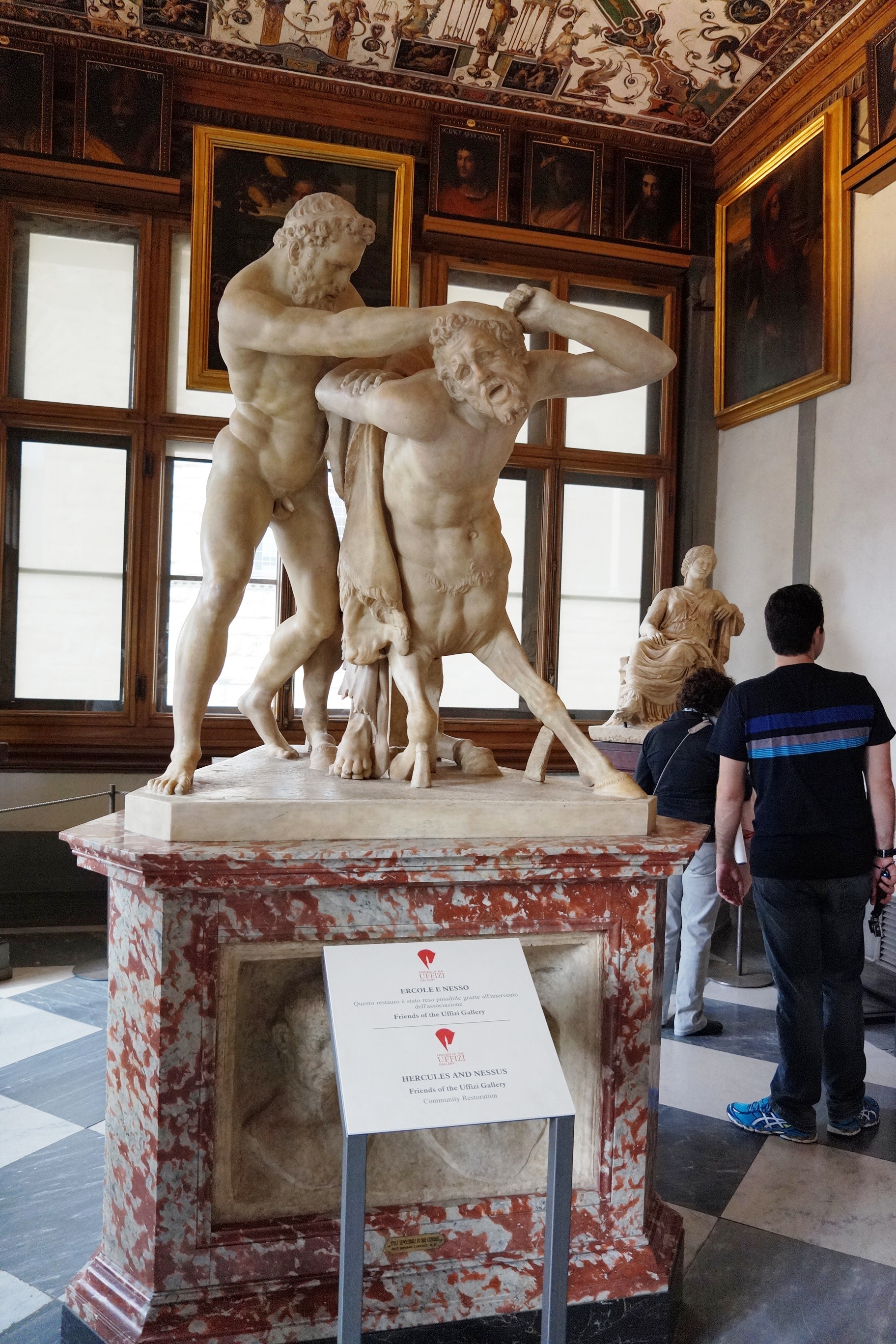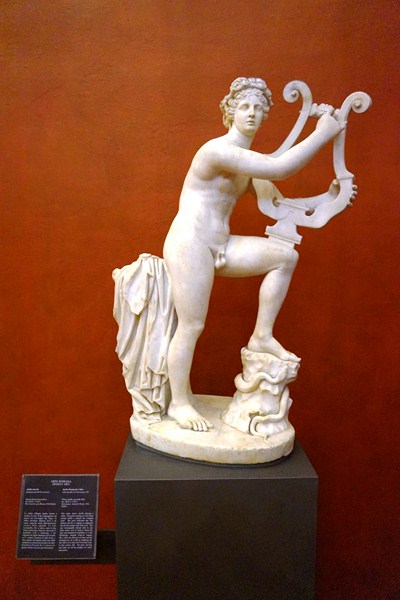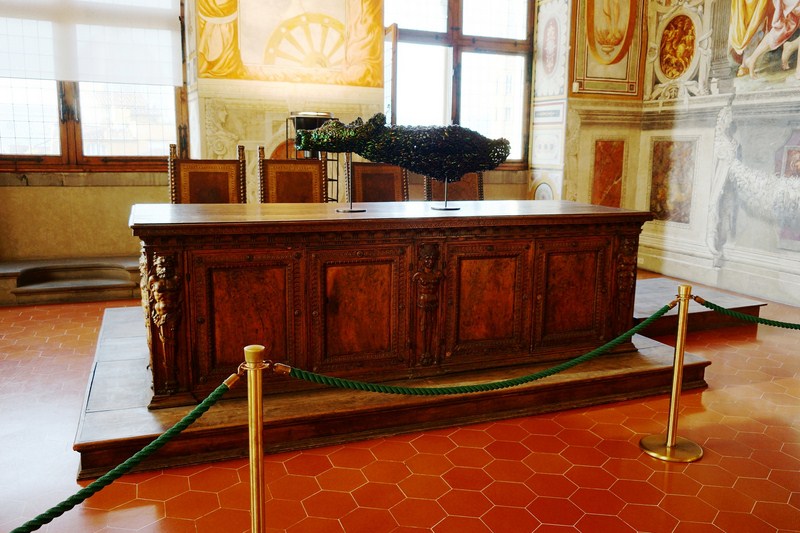
Audience Chamber – Magistrate’s Desk (ca. mid-16th century, walnut, on permanent loan from State Archives of Florence, 1918)
The Apartments of the Priors, like those making up the adjacent Apartments of Eleonora of Toledo, are situated in one of the oldest parts of the palace. Built between the late 13th and early 14th centuries, it housed members of the body governing the Florentine Republic which, at the time, consisted of the eight elected priori or priors (two for each of the four quarters of Florence, they were all obliged to reside permanently in the palace for the duration of their two-month mandate), the Gonfalonier of Justice (Gonfaloniere di Giustizia, the “Standard Bearer of Justice”) who acted as the figurehead of the state, two advisory bodies, the Twelve Wise Men and the Sedici Gonfalonieri, and two legislative bodies, the Consiglio del Popolo and the Consiglio del Commune.
Check out “Palazzo Vecchio“
Though their private quarters were renovated by Duke Cosimo I to become private chambers for his wife, Eleonora of Toledo, the public rooms now known as the Apartments of the Priors kept their more or less public character (Cosimo I de’ Medici simply had the walls of the Audience Chamber frescoed and a new room, currently the Hall of the Maps, built).
The Audience Chamber (Sala dell’Udienza) or Hall of Justice, containing the oldest decorations in the palace, was used to house the meetings of the six priori (guild masters of the arts) and granted audiences to subjects of Duke Cosimo I. Like the Hall of Lilies next door, it results from the partition of an existing hall as large as the whole of the Hall of the Two Hundred on the floor below.
It was split it into two separate chambers by a special wall, without real foundations, erected by Benedetto da Maiano between 1470 and 1472. Its carved coffer ceiling and frieze of painted wood, laminated with pure gold, was done, from 1470–1476, by Giuliano da Maiano (elder brother of Benedetto) and his assistants.
On his return from exile after his predecessor’s death, Duke Cosimo I had the walls frescoed, from 1543-1545, by Francesco de’ Rossi (also known as Francesco Salviati) with a decorative value representing Stories of Marcus Furius Camillus (a Roman general, mentioned in the writings of Plutarchus, who freed Rome from the Gaul in 390 BC). Since Salviati had his schooling in the circle around Raphael in Rome, these large frescoes are mirrored on Roman models and therefore not typical of Florentine art.
The marble door frame communicating with the Hall of Lilies, with the statue of Justice, was a marvel sculpted by brothers Giuliano and Benedetto da Maiano from 1476-1480. The door with marquetry portraits of Dante and Petrarch was also done, from 1476-1480, by Giuliano and Benedetto da Maiano. Its inlaid woodwork (intarsia) was carved by Francesco di Giovanni (known as Del Francione ) based on a design by Sandro Botticelli. The marble portal of the Chapel, with the Monogram of Christ, was based on a design by Baccio d’Agnolo (1529).
A small doorway leads into the adjoining small Chapel of the Signoria. In the 14th century, a chapel set aside for the Priors, dedicated to St. Bernard, was known to have existed but its precise original location is unknown. In 1511, at the time of the first Republic, Gonfaloniere Piero Soderini commissioned Baccio d’Agnolo to build the present chapel. In 1512, after the return of the Medici, building work continued.
The chapel contains a reliquary of St. Bernard. Here the priors, in the execution of their duties, used to supply divine aid. Thirty-two Latin inscriptions, from the Bible and Classical or early Christian writers, declaim the moral and religious principles that were supposed to guide the decisions of the government officials who gathered to pray here. Before he was hanged on the Piazza della Signoria and his body burned, Girolamo Savonarola said his last prayers in this chapel.
On a background imitating gold mosaic, Ridolfo Bigordi (known as Ridolfo Ghirlandaio and son of the better known Domenico) decorated the on the walls and ceiling (its vaults echo the ceiling of Raphael’s Stanza della Segnatura in the Vatican) of the chapel with marvelous frescoes featuring religious themes, scrolls, Florentine emblems and ornamental motifs.
The Holy Trinity, on the ceiling, and The Annunciation on the wall facing the altar, are of particular interest. The altar formerly had a painting (now on exhibition in the corridor of the Uffizi Gallery) representing the Holy Family by Mariano Graziadei da Pescia (a pupil of Ridolfo Ghirlandaio). Today, it has a good painting of St. Bernard by an unknown artist.
The chapel was also home to the archives and most precious objects in the Treasury of the Signoria. Among its most treasured possessions, kept in the aumbry to the right of the altar, is the famous Digest of Justinian codex (533), which was removed from the city of Pisa, and a rare 9th century Greek evangelistary, as recorded by an inscription in the grille painted on the aumbry doors (now in the Biblioteca Medicea Laurenziana in Florence).
The Hall of the Lilies, like the Audience Chamber next door, also resulted from the partition of an existing hall into two separate chambers by Benedetto da Maiano between 1470 and 1472. The walls were intended to receive a cycle of Illustrious Men, models of civic virtue who were akin to the cycle that decorated the previous 14th century hall.
In 1482, the Signoria entrusted its decoration to Ridolfo Ghirlandaio, Botticelli, Perugino, Biagio d’Antonio, Piero del Pollaiolo, some the greatest artists of the day, almost all of whom had recently returned from decorating the Sistine Chapel in Rome.
However, only Domenico Ghirlandaio completed the task and frescoed one of the walls (from 1482-1485) with the The Apotheosis of St. Zenobius (bishop and first patron saint and protector of Florence), depicting the saint between Saints Eugene and Crescentius and the Marzocco lion (the symbol of the city), and painted with a perspectival illusion of the background (where one can see the Cathedral, with Giotto’s original facade and bell tower). A bas-relief of the Madonna and Child can be found in the lunette above.
This fresco is flanked, on both sides, by frescoes of famed Romans with Brutus, Gaius Mucius Scaevola and Camillus, on the left , and Decius, Scipio and Cicero on the right. Medallions of Roman emperors fill the spandrils between the sections. . The Statue of St. John the Baptist and Putti are all done by Benedetto da Maiano and his brother Giuliano.
The Angevin emblem, a fleur-de-lys (in gold leaf) on a blue ground surmounted by a red rake as a tribute to the French (longstanding defenders of Florentine freedom), by Bernardo di Stefano Rosselli in 1490, decorate the other three walls and the carved ceiling. The door leading to the Audience Chamber, with the marquetry figures of poets Dante and Petrarch, are part of the unfinished project
The door in this wall, flanked by two dark marble pillars (originally from a Roman temple), leads to the Hall of Geographical Maps (Stanza della Guardaroba) or Wardrobe where the Medici Grand Dukes kept their precious belongings. In 1988, after its lengthy restoration, the (original) statue “Judith and Holofernes” by Donatello was given a prominent place in this room.
The cabinets and carved ceiling were done by Dionigi Nigetti. The cabinet doors are decorated with 53 remarkable maps, of scientific interest, and oil paintings by Fra Ignazio Danti (1563–1575), brother of the sculptor Vincenzo Danti and Dominican monk who followed the Ptolemaic system, while already using the new cartographical system of Gerardus Mercator, and Stefano Buonsignori (1575–1584). Of great historical interest, they give a good idea of the geographical knowledge in the 16th century. In the center of the room is the mappa mundi, a large globe ruined by excessive restorations.
The Old Chancellery, part of a section of the palace built in 1511 (at the time of Gonfaloniere Piero Soderini) to link the building’s 14th century core with the Great Council Room (now Great Hall of the Five Hundred ), was erected towards the end of the 15th century. During the time of Duke Cosimo de’ Medici and his successors, it became one of the rooms of the Wardrobe which housed the ruling family’s moveable possessions. The room is entered via a two-light window, set in the east wall of the Hall of Lilies, which formerly overlooked the Dogana (“Customs Courtyard”).
Originally having windows down both of its long sides, the room housed the office of the First Chancellor of the Republic, a figure who worked alongside the Gonfaloniere in running the palace. In 1511, the office was held by humanist Marcello Virglio Adriani. It was also the office of the great statesman and scholar Niccolo Machiavelli (author of such celebrated works as The Prince, the Mandragola and The Art of War) when he was Secretary of the Second Chancellery. His polychrome terracotta bust, probably modeled on his death mask donated by collector Charles Loeser, and his portrait are by Santi di Tito, placed here in the last century to recall the room’s original function. On the pedestal in the center of the room is the famous Winged Boy with a Dolphin by Verrocchio, brought to this room from the First Courtyard.
The reassembled Study Room, used by Cellini to restore the treasures of the Medici princes, was where, from the little window in the wall, Cosimo I spied on his ministers and officers, during meetings in the Salone dei Cinquecento. It later became a museum of Mannerist paintings.
Apartments of the Priors: Palazzo Vecchio, Piazza della Signoria, Florence, Italy. Tel: +39 055 276 8325. Open daily, 9 AM – 7 PM (except Thursdays, 9 AM – 2 PM). Admission: €6.00. Combined ticket with Cappella Brancacci: €8.00.

